





































THE MAGAZINE FOR ENTERPRISE APPLICATIONS AND ASSOCIATED TECHNOLOGIES ISSUE 18 Q1 2024


Optimize and accelerate your journey to Oracle Cloud with generative AI solutions. Our collaboration supports your transformation with industry expertise, open innovation and trust - faster than you think.
Learn more
ibm.com/consulting/oracle

+




How do you go from chasing growth to orchestrating opportunity?
EY curates the right technology, capabilities and relationships to create transformative ecosystem strategies for your business.
Reframe your future | ey.com/uk/ecosystems

© 2024 Ernst & Young LLP. All Rights Reserved. EDNone.
EDITOR-IN-CHIEF
Giacomo Lee giacomo@erp.today
DESIGN DIRECTOR
Ceci Perriard ceci@erp.today
MANAGING DIRECTOR
Tony Little tony@erp.today
CLIENT SUCCESS DIRECTOR
Ana Collins ana@erp.today
SENIOR SALES DIRECTOR
Richard McEvoy rich@erp.today
DEPUTY EDITOR
Stephanie Ball stephanie@erp.today
TECHNOLOGY EDITOR
Adrian Bridgwater adrian@erp.today
COMMERCIAL EDITOR
Charles Whitmore charles@erp.today
CHIEF STAFF WRITER
Yoana Cholteeva yoana@erp.today
EDITORIAL ASSISTANT
Melissa Evatt melissa@erp.today
NEWS ANALYST
Shána Briddock shana@erp.today
Ekaterina Dudakova ekaterina@erp.today
DESIGNER
Jasmine Roberts jas@erp.today
COMMERCIAL MANAGER
Richard Carr richard@erp.today
YPN COORDINATOR
Grace Barrington grace@erp.today
OFFICE SUPPORT ASSISTANT
Michelie Blaney michelie@erp.today
TRAINEE
Ella Moloney ella@erp.today
PHOTOGRAPHY
Kurt Rebry
Joel Chant
EDITOR’S WORDS
The Year of the Customer
As our magazine hits the presses, the Year of the Dragon has arrived, with the lunar calendar bearing another reminder that 2023 is over, and time is edging closer to the end of the tax year. Well, in some nations at least.
Looking back at 2023, what was the biggest takeaway?
In ERP Today’s view, last year was the year of the partner, with software and hardware giants cozying up in the name of all things AI.
Lost in all the fanfare of these corporate relationship announcements was, arguably, mention of the customer. Many people coming across the grandstanding probably came away thinking, “What’s in this for me?
I don’t see any AI in my services, let alone use it.”
Vendors were so busy teaming up on chips and joint services that they may have forgotten the end user of their software. All the trumpeting on AI made for an echo chamber, designed to satisfy boards and spice up earnings calls.
But in the experience of ERP Today, vendors have woken up to this almost one-sided discourse. In various conversations, we are seeing a fight for every customer, and that’s for both big vendors and small. That fight has been emboldened by a weakening global economy which all the AI talk tried to distract us from. In some ways, AI was part of that same discussion, with offerings of automation hinting at the potential cost-cutting to be gleaned from carving up the workforce. Yet, it became pretty clear in 2023 that AI still needs a human-in-the-middle approach, especially at this nascent stage.
Those humans in the middle are not only needed, but they want their work to be made easier for them. They know AI can help, but they want to see it in action. They want the benefits of low code, too, and better ways to delve through data. The end user and the customer are bringing this message to the market, and for the vendors to stay on point in 2024, they need to listen.
The real dragons deciding vendors’ fates aren’t the execs in the boardroom or the partners waiting in the wings. It is the customer who holds all the cards with their purchasing power, for cloud, on-prem, integration and more.
This means it’s time for vendors to really sit down with user groups. They need to see how customers are actually using their software in the wild. We’re at the point where the ERP big names need to look at their pricing, the sectors they’re focusing (and not focusing) on, and the cultures behind their customers.
Are their people in need of a digital transformation, or looking for the Next Big Thing? How do partners fit into this echo chamber, and what conversations are the consultancies having on an implementation level? The likes of the Big Four should also pay heed to these dragons, with less of an eye on flashy futuristic trends and more concern paid to what’s needed in the here and now.
ERP Today readers, welcome to the Year of the Customer - and while we can’t promise everyone is listening, you can rest assured that we can hear your mighty roars.
Giacomo Lee, editor-in-chief
erp_today @erp_today erp-today ERP.TODAY 20-22 Wenlock Road, London, N1 7GU. Company No. 11642743 A WELLESLEY INFORMATION SERVICES COMPANY ERP TODAY MAGAZINE LIMITED

CONTENTS ERP TODAY | Q1 2024 36




ARTICLES 09 News, Deals & Wins Industry news from across the enterprise technology sector 26 Cover story Steve Lucas and Boomi 36 A look to the future The experts’ 2024 enterprise tech predictions 44 Boche means business An exclusive with SAP’s Vivien Boche 48 Delta Air Lines’ AI lift-off The American airline brings its HR AI vision to life 54 Workforce gone walkabout Holger Mueller asks if building back better is a remote possibility 58 Confessions of a retail technologist Can we get a better kind of clickbait? 62 AWS market monopoly? Winners and losers in the hyperscaler marketplace 68 Public sector’s digital divide Dr Raj Iyer on bridging the service gap Now 72 Quiet thriving in the HCM workplace Thriving in HR needs more than people skills 78 Tapping into ERP diversity A closer look at Stephanie Poore’s journey 86 An open door to STEM Richard Pepper on nurturing next-gen enterprise talent 92 Minos Ataliotis Giacomo Lee talks cloud and curveballs with CloudRock’s CEO 96 The great employee glow up Say hello to your new favorite customers 101 User wins Your implementation stories shared by ERP Today 26 86 44 68 MOPIC/SHUTTERSTOCK.COM

Your Integration & Automation Partner.





How can AI generate the confidence to reach its potential?


Find out how you can face the future with EY.ai to help build confidence, create exponential value and augment people’s potential.
















© 2023 Ernst & Young LLP. All Rights Reserved. ED None.
NEWS DEALS &WINS DEALS
 BY STEPHANIE BALL AND YOANA CHOLTEEVA
BY STEPHANIE BALL AND YOANA CHOLTEEVA
Mark Moffat has been promoted to CEO of IFS.
The former chief customer officer takes over from Darren Roos, who has been appointed chair of the company’s board.
Moffat, who has additionally held several senior positions at PwC, Roos, and the IFS executive team have worked on the transition since last year as part of the board’s succession planning process.
On his appointment, Moffat said: “It is a great honor for me to lead IFS as we embark on this next chapter of growth.
“We have been putting all the right ingredients in place to continue to deliver on our strategy: a differentiated proposition, a hugely advanced and capable AI-based product, an engaged customer base, a motivated partner ecosystem and of course, our talented employee base.”
Mark Moffat takes the IFS helm: steering for $1bn win
The incoming CEO has shown his mettle quickly, with his first set of quarterly results since assuming the role seeing IFS’ software revenue grow 33 percent year-on-year, despite the unpredictable economic and geopolitical disruption.
For Moffat, this is a sign that the “core IFS value of being customer obsessed is paying off.”
The CEO also emphasized that the company “will shortly reach a very significant landmark with $1bn annual recurring revenue representing a strong vote of trust from customers.”
Lee: “It’s not like they’re taking the unknown from the outside to lead the ship. I don’t see major changes to the strategy because they’ve already got a pretty solid strategy focusing on certain industries. By our assessments, year over year, they are increasing their capability on the ERP side, they’re in a visionary situation and very well placed.”
“IT’S AN HONOR FOR ME TO LEAD IFS AS WE EMBARK ON THIS NEXT GROWTH CHAPTER”
It follows a series of customer wins, with the Norwegian Police, Tele 2, Mattr, NOTE AB, Havfram, Van Oord, TÜV NORD, Stannah Lifts, Enercare, mydentist, and City of Tallahassee all turning to IFS.
Commenting on Moffat’s appointment, Chris Pang, VP analyst, Gartner, told ERP Today’s Giacomo
The helm switch-up also came with two additional executive appointments for IFS, as Max Roberts joined as chief operating officer and Belinda Finch stepped into the company’s chief information officer role.
Under the watch of this fresh, yet experienced, leadership team, and with the vendor’s close focus on its customers, core industries and industrial AI capabilities with IFS.ai already bringing in positive crossregional results, IFS looks certain to reach its $1bn target before long.
visit us ERP.TODAY 9
KURT REBRY
NEWS DEALS &WINS

Carl Eschenbach leads solo for Workday
As Workday jumps into its new 2025 financial year, the HCM giant announced its year-long co-CEO Carl Eschenbach is taking a solo lead.
Aneel Bhusri, Workday’s co-CEO, co-founder and chair has stepped into a strategic advisor to the CEO role and will remain integral to the organization as co-
founder and executive chair of the Workday board of directors.
The news is hardly unexpected, with the pair telling ERP Today of their succession plans for Workday in an exclusive interview last year, when Eschenbach was first named co-CEO alongside Bhusri.
On his appointment, Eschenbach expressed his
Hewlett Packard Enterprise (HPE) and the University of Stuttgart (UoS) have agreed to build two new supercomputers at the High-Performance Computing (HPC) Center of UoS.
A transitional supercomputer called Hunter will begin operation in
firm belief in the company: “Working alongside Aneel for the last year has been a highlight of my career and has solidified my belief in the opportunities ahead for Workday.
“I’m honored to serve as CEO of this incredible company and to continue working with our world-class leadership team and more than 18,000 Workmates around the globe to build one of the most enduring software businesses of our time.”
For Workday, the exventure capitalist Eschenbach presented a path to increase company growth and profitability. Since Eschenbach’s onboarding, the firm has reached a series of milestones. Following the increased momentum from its mass expansion scheme, Workday has hit over $1bn in annual recurring revenue for its EMEA business and has strengthened its retail, hospitality and financial services industry business.
It follows a new CFO, CMO and CIO all joining the leadership bench over the past year.
HPE advances in supercomputing

2025, followed by the installation of Herder, an exascale system to provide an expansion of Germany’s HPC capabilities.
For UoS researchers, Hunter and Herder are poised to create new research opportunities in engineering and applied sciences applications as well as research to ad-
AWS AND THE VERY GROUP LAUNCH GENAI LAB
AWS and The Very Group are expanding their partnership to accelerate retail innovation with generative AI.
As part of the collaboration, Very will launch a new Generative AI Innovation Lab to deliver interactive and personalized digital shopping experiences to millions of customers.
AI experts from the $100m AWS Generative AI Innovation Center will help Very securely use GenAI at scale, navigate technical challenges, and roll out new experiences for customers faster and with less heavy lifting.
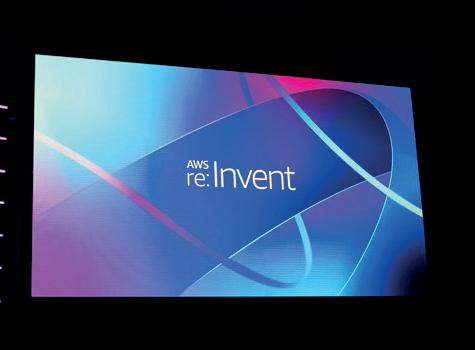
dress climate change.
It follows the launch of HPE’s supercomputing solution for GenAI, powered by NVIDIA Grace Hopper GH200 Superchips, which aims to allow enterprises, research institutions and government organizations to accelerate training and tuning of AI models with private data sets.
10 ERP TODAY | Q1 2024
HPE
Carl Eschenbach
DARREN MILLER/ERP TODAY AWS








Salesforce acquires Spiff and joins AWS marketplace
Salesforce has agreed to acquire Spiff, the incentive compensation management software provider, to empower CROs to make decisions better.
The move looks to help CROs align with financial and sales operations teams to easily selfmanage complex incentive compensation plans and understand the factors propelling revenue performance to drive top-line growth.
and I’m grateful for the opportunity to make an even deeper impact on the space as part of the Salesforce ecosystem.”
“I’M GRATEFUL FOR THE OPPORTUNITY TO MAKE AN IMPACT WITH SALESFORCE”
Jeron Paul, CEO of Spiff, said: “We have always taken pride in Spiff’s pace of innovation
Salesforce and AWS have also expanded their long-standing partnership to broaden product integrations across data and AI and offer select Salesforce products on the AWS marketplace. Both companies will deepen their integrations between AWS and Salesforce products. Salesforce will also support Amazon Bedrock as part of Salesforce’s open model ecosystem strategy.
Elsewhere, UK
insurance broker, Miller, has partnered with Salesforce to combine Salesforce Einstein and Financial Services Cloud to drive productivity and efficiency across its business.
Leveraging Einstein AI in Financial Services Cloud, Miller aims to provide more personalized and meaningful client service experiences while also enhancing broker productivity.
It comes as Salesforce has announced it has been selected to join the US AI Safety Institute Consortium (AISIC) to help facilitate collaboration between public and private interests as AI technologies advance.
PWC LAUNCHES TAX AI ASSISTANT WITH HARVEY AND OPENAI
PwC UK, alongside partners Harvey and OpenAI, has announced the launch of its UK taxtrained AI model.
Available to all 2,300 PwC UK tax professionals, it will act as an AI assistant, generating tax content as part of the delivery of services to clients.
Built on a foundation of PwC UK’s proprietary tax expertise with technology developed by Harvey and OpenAI, the tool combines tax and technology skills. It cross references and has been trained on case law, legislation and other underlying sources, with the data being regularly refreshed to reflect changes and updates to tax rules.
The collaboration forms part of PwC’s wider strategy to lead the professional services market in the adoption of AI and technology, ensuring clients benefit from the changing operational environment.

12 ERP TODAY | Q1 2024 NEWS DEALS &WINS
SHUTTERSTOCK
MIKITA YO/UNSPLASH
Accenture spreads GenAI with a global approach
Accenture has announced it will set up GenAI studios in nine countries across Asia Pacific and Latin America to respond to growing client interest in the technology.
The studios form part of Accenture’s $3bn investment plan in data and AI, and will be based in Australia, Argentina, Brazil, Greater China, India, Japan, Mexico, Philippines and Singapore. They will be used to connect clients with data and AI experts from Accenture, as well as ecosystem partners.
In these countries, Accenture intends to facilitate rapid experimentation, co-creation and
the expansion of GenAI solutions, leveraging the company’s responsible AI framework as a foundation.
Vivek Luthra, managing director data and AI lead, Accenture growth markets, said: “Harnessing the true potential of generative AI lies in going deeper, and building a strong data strategy, anchored in a digital core including a modern cloud and ERP infrastructure, and mature data and AI capabilities.”
The company also announced plans to launch a network of GenAI studios in North America where companies can explore ways to optimize and reinvent their businesses
Vodafone and Microsoft have announced a new strategic partnership to bring advances in generative AI, digital services and the cloud closer to more than 300 million businesses.
During its ten-year collaboration, the duo will work to transform Vodafone’s customer
“HARNESSING THE POTENTIAL OF GENAI LIES IN BUILDING STRONG DATA STRATEGY” MATTHEW MANUEL/UNSPLASH

through the responsible use of GenAI applications.
Accenture’s AI enthusiasm further showed in its Q1 results, which revealed the company “continues to lead the industry in GenAI - the great accelerator of reinvention - with over $450m in new bookings,” as said by Julie Sweet, chair and CEO, Accenture.
The firm’s global ap-
proach can also be seen across its recently announced partnerships with Google Cloud, McDonald’s Corporation, Unilever, Riyadh Air, Union Bank of India, Commercial Bank of Dubai as well as acquisition of sourcing and procurement services Insight Sourcing and Singapore-based marketing company, Jixie.
Vodafone leans on tech advancements with Microsoft

experience leveraging Microsoft’s GenAI and hyperscaling Vodafone’s managed IoT connectivity platform.
The pair will also develop new digital and financial services for businessesparticularly SMEs across Europe and Africa - and overhaul Vodafone’s global data center cloud strategy.
In the meantime, Voda-
fone is gearing up to invest $1.5bn over the coming decade in cloud and customer-focused AI services developed in conjunction with Microsoft, using Vodafone’s fixed and mobile connectivity services.
The digital services are poised to be built on Vodafone’s framework of unbiased and ethical privacy and security policies.
visit us ERP.TODAY 13 ACCENTURE




BE READY seize the moment

With SAP Cloud ERP, your business can be ready for anything that happens next.

Start your journey now.

















ServiceNow transforms payment services with Visa
ServiceNow has announced a five year strategic alliance with Visa to transform payment services.
The initial phase includes the launch of ServiceNow Disputes Management, built with Visa - a connected disputes resolution solution for issuers which combines ServiceNow’s AI first platform and Financial Services Operations solution with Visa’s technology investments.
and many financial institutions often use siloed, integration-lacking solutions.
John Ball, executive vice president and general manager, customer workflows, ServiceNow, said: “By making Visa’s services available through ServiceNow’s intelligent, AI first platform, we’re powering innovation and setting a new standard in the payments industry.”
“WE’RE POWERING INNOVATION AND SETTING STANDARD IN THE PAYMENT INDUSTRY”
Currently, managing disputes involves multiple systems and teams,
The solution includes ongoing changes to disputes rules and applies industry best practices for processes and fraud.
IFS APPOINTS GRAHAM AS CHIEF SUSTAINABILITY OFFICER
IFS has announced the appointment of Sophie Graham as chief sustainability officer, reflecting the company’s continued commitment to sustainability and its ambition to accelerate the delivery of its ESG agenda.
In her new role, Graham oversees the delivery of the organization’s strategy, working with the executive leadership team to make an impact across its global operations.
In another five-year strategic collaboration, ServiceNow teamed up with AWS, with the ServiceNow platform becoming available as a SaaS offering in the AWS Marketplace.
The companies will also co-develop industryspecific, AI-powered business applications to host on AWS and add intelligence to critical business workflows.
It also incorporates GenAI powered experiences to improve customer intake and agent investigation.
Elsewhere, ServiceNow announced the acquisition of UltimateSuite to enhance process mining and identify and automate operational bottlenecks across its Now Platform.
With a background in environmental law, Graham has worked across EMEIA, Americas and the UK in the technology and finance sectors. Since 2021, Graham has spearheaded sustainability and ESG at IFS and she has previously led sustainability reporting at Santander UK. In the Americas, Graham has headed an ESG strategy across seven countries and established an international charity partnership with The Red Cross.

16 ERP TODAY | Q1 2024 NEWS
DEALS &WINS
IFS
SERVICENOW
Bill McDermott
Sophie Graham
IBM assists with machine learning and multi-cloud
IBM and German drugmaker Boehringer Ingelheim have announced an agreement to apply machine learning tools to its drug discovery efforts by harnessing an AI model trained in the computer labs of IBM.
IBM’s foundation model technologies are used to design antibody candidates for the defined targets which are screened with AIenhanced simulation to select and refine the best binders for the target.
Boehringer, a leader in the development and manufacturing of antibodybased therapies, to help accelerate the pace at which Boehringer can create new therapeutics.”
Accelerating the deployment of a hybrid, multi-cloud platform at the edge, IBM also announced a new collaboration with global digital infrastructure provider American Tower.
“WE ARE THRILLED TO BRING IBM’S TECHNOLOGIES TO CREATE NEW THERAPEUTICS”
Alessandro Curioni, vice president, accelerated discovery, IBM Research, said: “We are thrilled to now bring IBM’s multimodal foundation model technologies to
As part of the collaboration, American Tower plans to expand its neutral-host Access Edge Data Center ecosystem to include IBM Hybrid Cloud capabilities and Red Hat OpenShift.
In another AI and hybrid cloud announcement, IBM

has entered into an agreement with Software AG to purchase StreamSets and webMethods, Software AG’s Super iPaaS ERP platforms for €2.13bn.
The news was followed by IBM announcing its fourth quarter and FY2023 earnings results, cementing a successful 2023 for Big
MBlue where an increasing number of users are adopting AI. In the earnings call, IBM CEO, Arvind Krishna said: “Our approach to AI for business is resonating […] Simply put, we meet clients where they are, and allow them to deploy AI models across multiple environments.”
McLaren Racing and Workday expand partnership
cLaren Racing and Workday have expanded their multi-year partnership, with Workday continuing as an official partner of the McLaren Formula 1 Team.
The Workday logo debuted on the rear wings of the McLaren MCL38 drivers Lando Norris and Oscar Piastri during test-

ing, leading up to the Bahrain Grand Prix. Workday branding will also feature on McLaren team kits.
This collaboration further supports the partnership which began last year as Workday revealed its branding at the April, 2023 Australian Grand Prix. The collaboration sees McLaren continue to use Workday’s financial planning software,
including Workday Adaptive Planning.
Emma Chalwin, chief marketing officer, Workday, said: “McLaren represents the highest standard of efficiency and planning; a focus Workday also shares. Together, we aim to empower people to adapt and perform – whether on the racetrack or in the workplace.”
visit us ERP.TODAY 17
MARK AHSMANN WORKDAY

Oracle pursues healthcare innovations
Oracle has added new mobile capabilities to Oracle Fusion Cloud Inventory Management, part of Oracle Fusion Cloud Supply Chain and Manufacturing to support all core inventory transactions within a healthcare organization.
The additional capabilities will help organizations reduce inventory errors,
improve restock efficiency and gain visibility to better predict demand and optimize stock availability.
Other inventory transactions to be supported include full mobile device and barcode scanning support for receiving, putaway, picking, cycle counting, material transfers and the issuing of materials across all types of stocking
locations in a hospital.
Oracle has also announced that Oracle Fusion Cloud Applications Suite was recently chosen by North Memorial Health to help patients, streamline finance, supply chain and HR processes, enhance operational efficiency, reduce costs and improve the employee and patient experience.
North Memorial Health is to replace its 14 systems with one cloud applications suite to eliminate manual processes and boost the accuracy and speed of operations.
It follows the release of Oracle’s fiscal 2024 Q2 results, which Safra Catz, Oracle CEO, said showed “demand for our cloud infrastructure and generative AI services increasing at an astronomical rate.”
With billions of dollars in contracted demand, Oracle has built 100 extra cloud data centers, with 20 more to be co-located with Microsoft Azure as part of the multi-cloud initiative.
INETUM MAKES SERVICENOW ELITE LEAP WITH ACQUISITION
With the acquisition of Unifii, an independent ServiceNow Elite UKI partner, Inetum has become a leading European partner for ServiceNow, with nearly 500 ServiceNow experts in Europe and over 2000 certifications.
The strategic step will see Inetum offering offshore capabilities in India in addition to covering a wider geographic scope from UKI to Eastern Europe, Spain, Portugal, France, Belgium, Switzerland and Luxembourg and across industries including finance, technology and the public sector.

Cognizant chosen by Cambridge and Fortrea
Cambridge University Press & Assessment has entered a multiyear agreement with Cognizant to improve operational effectiveness, maintain exam results’ integrity and stay competitive in the evolving education sector.
Cognizant will provide application develop-

ment and support services to the University Press to address the growing demand for digital engagement and innovative products for millions of global learners, teachers and researchers. Leveraging GenAI technologies, the partnership looks to enhance productivity and learning experiences.
Fortrea, a global clinical
development and patient access solutions provider for the life sciences industry, has also recently selected Cognizant as its transformation provider to enhance its data and analytical capabilities. The firm hopes to set new standards in the CRO industry and drive the modernization required to support its global operations.
18 ERP TODAY | Q1 2024
NEWS DEALS &WINS
KIRSTEN DREW/UNSPLASH
DARKO STOJANOVIC/PIXABAY
UNIFII






SIMPLIFY THE TRANSFORMATION TO YOUR AGILE & INTELLIGENT ENTERPRISE NEXT GENERATION End to End Information Management Powered by JiVS IMP JiVS.COM low cost for data migration 50% 80% 100% 100% reduction of IT operational costs compliant & secure access to information support the digital composable enterprise


SAP launches RISE with SAP migration program
SAP has unveiled the RISE with SAP Migration and Modernization program, in response to user concerns regarding the complexities of cloud migration.
Ryan Poggi, MD UKI, has stated SAP’s commitment to maximizing value for its customers while encouraging cloud deployments, asking: “How do we maximize the value for as many customers as we can?”
The new program aims to address two primary challenges faced by businesses during cloud migration - scope and
cost. By streamlining processes, eliminating custom code and breaking down data silos, SAP aims to build confidence among business leaders to transition even the most intricate ERP systems to the cloud.
It comes at a pivotal point for SAP, marking three years until the end of ECC support, and with some cloud migrations taking up to two years, it’s a matter of now or never for legacy customers.
“HOW DO WE MAXIMIZE THE VALUE FOR AS MANY CUSTOMERS AS WE CAN?”
SAP’s latest Q4 financial results show a 20 percent boost to cloud revenue, with CEO Christian Klein hailing a “position of strength”
as SAP enters this new chapter.
Also ushering in a new EMEA era, SAP has combined its former EMEA North and EMEA South regions and appointed Emmanuel (Manos) Raptopoulos as its regional president.
Elsewhere in APJ, SAP India has welcomed Kulmeet Bawa as new global chief revenue officer of SAP BTP. Deloitte India has additionally teamed up with SAP India to deliver additional user benefits, such as faster time to market, easier access to cloud-based technologies including AI, ML and automation, among others.
CAPGEMINI WELCOMES BHAGAT AS CFO
Capgemini has appointed Nive Bhagat as group CFO and member of the group executive board. Bhagat succeeds Carole Ferrand who has served as CFO since 2018.
The appointment follows Bhagat’s previous role as CEO of Capgemini’s cloud and infrastructure services, which she served since 2019. In addition to experience at Infosys and KPMG in enterprise solutions and corporate finance roles, Bhagat has held various positions at Capgemini, including head of markets for all sectors and head of private sector across the UK applications business, as well as a member of the UK Country Board from 2016.
Bhagat said: “It’s a privilege to have been appointed Capgemini CFO. I am excited to work with the group’s leadership and board to execute our clear strategy and build on our strong financial footing.”

20 ERP TODAY | Q1 2024 NEWS
DEALS &WINS
CAPGEMINI
Christian Klein
Nive Bhagat
SAP
the
and
member
An independent community, creating a hub for all our members to Discover, Influence, Share & Connect together. Join
UK Oracle User Group at ukoug.org
become a
today

Google Cloud collabs with Motorola, HSBC and Admiral
Google Cloud and Motorola Solutions have announced a strategic, multi-year agreement to innovate cloud solutions across Motorola’s safety and security technologies.
Using Google Cloud’s infrastructure, Motorola Solutions will work to advance assistive intelligence, including reliable video content delivery and mapping, as well as AI capabilities, to help address real-world safety challenges.
“TOGETHER WE WILL CHANNEL OUR CLOUD ADVANCEMENTS TO SUPPORT MOTOROLA”
Google Cloud, said: “Motorola Solutions has long demonstrated leadership in innovating the technologies that safeguard communities and enterprises. Together we will channel our latest cloud advancements to support Motorola Solutions’ sharpened focus on safety and security innovations via the cloud.”
Google Cloud ReadySustainability program.
As part of the collaboration, Google Cloud will introduce GCRSustainability companies to HSBC’s climate tech finance team to explore venture debt financing options.
INFOR PARTNERS WITH SYSTEMAIR AND DAILYPAY
Infor has announced that ventilation company, Systemair, is moving its core business system to Infor CloudSuite Manufacturing for a smoother integration of acquired companies and the development of new products and services.
With Infor CloudSuite Manufacturing, Systemair has access to a cloud solution, powered by AWS, that will allow the company to centralize system administration in the company structure, reducing its costs.
Infor has additionally announced a partnership with payroll firm DailyPay to simplify and speed up the process of giving employees their wages.
Will Grannis, vice president and CTO,
HSBC also entered into a partnership with Google Cloud to accelerate climate mitigation and resilience through financing and support for companies in the
Another recent agreement saw financial services company Admiral select Google Cloud as a strategic cloud partner, with Admiral’s core insurance operations being powered by Google Cloud. The company will also use Google Cloud technologies to develop digital products and services, such as further improvements to its customer-facing mobile app.
DailyPay is integrated with existing Infor Workforce Management systems meaning customers can add this new feature to their teams and provide hourly employees with same-day access to their pay, without additional administrative tasks.

22 ERP TODAY | Q1 2024
NEWS DEALS &WINS
SUNDRY PHOTOGRAPHY/SHUTTERSTOCK
TOWFIQU BARBHUIYA/UNSPLASH





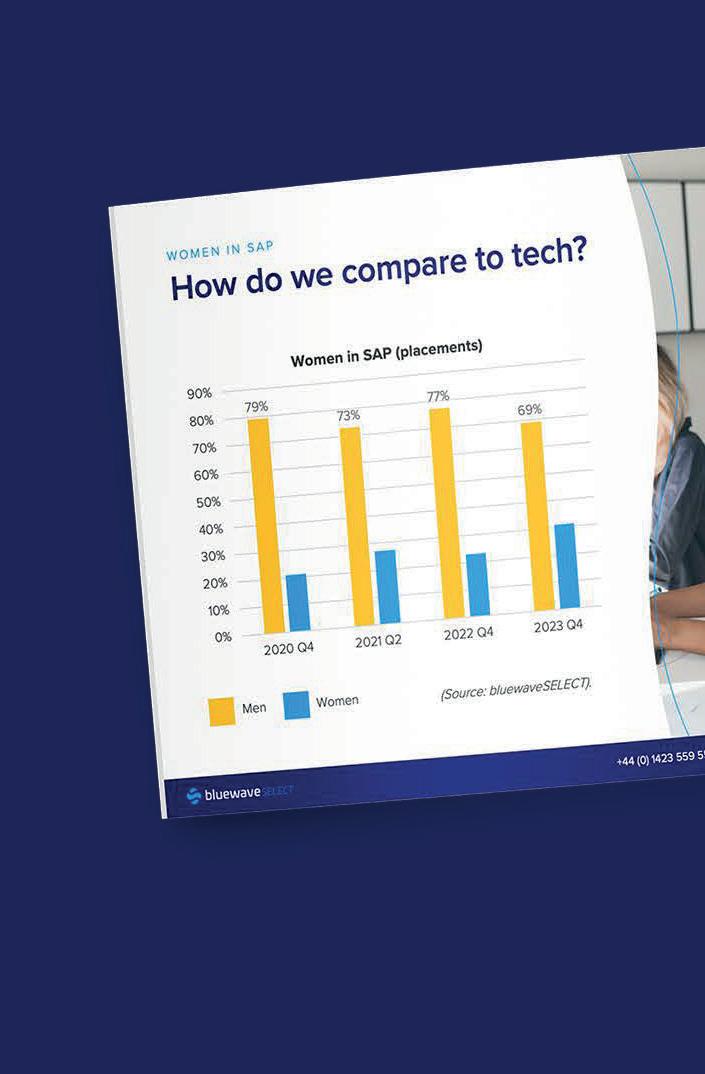





bluewaveselect.com

EY collabs with BlueVoyant and Aspen Technology
EY US has entered into a strategic alliance with cyber defense company, BlueVoyant, to provide cyber risk management design.
The EY-BlueVoyant alliance will allow joint clients to build, operate and improve services around Microsoft 365 E5 advanced security tools. EY US and BlueVoyant will work to-
gether to help enterprises successfully deploy and effectively run Microsoft 365 E5 advanced security tools and solutions.
With this alliance, organizations will gain access to BlueVoyant’s Sentinel and Defender technical skills and Managed Detection and Response (MDR) services.
Dave Burg, cybersecu-
rity leader, EY Americas, said: “Cybersecurity is fundamental to enabling sustainable and scalable digital transformations. By actively collaborating with BlueVoyant, EY US can expand its capabilities and capacity to help enterprises successfully deploy and effectively run Microsoft 365 E5 advanced security tools and solutions.”
EY US has also entered into an alliance with Aspen Technology to help clients in industrial and energy markets meet the demand for resources and achieve sustainability targets across industries, including power and utilities, oil and gas, chemicals and advanced materials, industrial products and mining and metals.
With this suite of capabilities, organizations can effectively navigate the energy transition and embrace the rise of renewable energy while increasing operational profitability, modernizing grid management and reducing their carbon footprint.
UIPATH’S Q3 24 SHOWS CUSTOMER GROWTH
UiPath has announced its Q3 financial results for FY2024, showing significant growth in revenue and ARR, driven by customer growth and the team’s execution.
Co-CEO Rob Enslin, said: “I am pleased with our strong third quarter results with ARR growing 24 percent year-overyear to $1.378bn, driven by the team’s execution and the transformational results we deliver.”
The company recently pivoted its go-to-market resources towards organizations investing in enterprise automation over the long-term.
Rob Enslin

Certinia unveils AI capabilities to its platform
Certinia has announced advanced AI capabilities and a range of new enhancements to its Services-as-aBusiness platform.
The company’s most advanced purpose-built AI for services, Certinia AI, has expanding capabilities, including predictions for days-to-pay in

cash flow forecasting and enhancing margin optimization in services delivery.
Certinia hopes that professional services teams will be more inclined to harness AI capabilities to tackle real-world use cases in finance and professional services.
One new addition includes streamlining
accounting workflows to enable financial controllers to compile comprehensive reports for stakeholders and board members. The firm is also evolving forecasting capabilities with extended planning and analysis to enable greater modeling flexibility like advanced what-if scenario forecasting and improvements.
24 ERP TODAY | Q1 2024
NEWS DEALS &WINS
STEVE JOHNSON/UNSPLASH
FEDERICO BECCARI/UNSPLASH
MICHAEL WESCHLER

Tech Mahindra, AWS and Atos help teams score with fans
Tech Mahindra has announced a new collaboration with AWS to build a sports cloud platform.
The offering focuses on building next-generation digital capabilities for sports organizations and delivering immersive and personalized experiences to sporting enthusiasts worldwide.
Tech Mahindra and AWS will collaborate to offer a digital platform to sports organizations and use cases related to content, community engagement and customer data
management, while delivering immersive stadium-to-home fan experiences by leveraging AR, VR and metaverse gamification.
“CLOUD, AI, ML TECHNOLOGIES WILL DRIVE THE SPORTS TECHNOLOGY OF THE FUTURE”
Samira Panah Bakhtiar, GM, media, entertainment and sports, AWS, said: “AWS provides cloud-enabled technologies that are at the heart of digital innovation, athlete performance optimization and epic fan engagement, transforming the way sports are played, analyzed and enjoyed.
“Tech Mahindra shares our passion for the sports
industry and our belief that cloud, AI, ML and emerging technologies will drive the sports technology of the future.”
Atos, the official IT partner of UEFA National Team Football also recently announced it will deliver on-site and remote IT services for the UEFA EURO 2024, taking place June 14 to July 24, 2024, in Germany.
At the event, Atos aims to improve the experience for all stakeholders and will be responsible for managing core IT planning and operations systems such as event management, diffusion systems - like the football service platform - and additional support and operational services.
IBM EXPANDS WITH QUANTUM HERON
Announced at its annual Quantum Summit in New York, IBM has unveiled IBM Quantum Heron, the first in a new series of quantum processors engineered to deliver high-performance metrics.
Having demonstrated its IBM Quantum Eagle earlier this year, the company also debuted the IBM Quantum System Two, its first modular computer and cornerstone of IBM’s quantum-centric supercomputing architecture. Located in Yorktown Heights, New York, the first IBM Quantum System Two has begun operations with three IBM Heron processors and supporting control electronics.
Dario Gil, SVP and director of research, IBM, said: “As we continue to advance how quantum systems can scale and deliver value through modular architectures, we will further increase the quality of a utility-scale quantum technology stack.”


IBM visit us ERP.TODAY 25
NATHAN ROGERS/UNSPLASH
INTEGRATION IS INNOVATION

BOOMI CEO STEVE LUCAS ON BEING
INSPIRED BY CONNECTING THE WORLD - AND WHY AI TRANSFORMATION CAN ONLY HAPPEN WITH YOUR DATA HOUSE IN ORDER.
26 ERP TODAY | Q1 2024
BY GIACOMO LEE | PHOTOS BY KURT REBRY

visit us ERP.TODAY 27

28 ERP TODAY | Q1 2024
n one level, the Boomi proposition is an iPaaS offering connectors for SAP, Salesforce, Oracle NetSuite, AWS and hundreds more. Founded in 2000, the company today boasts over 20,000 customers, 800+ global partners and more than 300,000 endpoints.
From another perspective, Boomi’s offering is one where the Earth meets ERP. The connection between these two disparate elements will make sense as you read our interview with the company’s CEO, Steve Lucas.
In the same vein, the art of “connecting” is the real story behind Boomi in 2024.
No ERP system is an island; users have to work with all manners of systems across a variety of instances. Variety is the spice of life, as they say, but users know how the landscape looks and feels: fragmented, for a better word.
Steve Lucas knows this, and acts on it with regards to the Boomi customer case. When explaining what drew him to Boomi, the chief exec explains to ERP Today that it’s all about connection.
“What deeply resonates with me is that people, companies, cultures even, they’re better when they’re connected. When they talk to each other, when they communicate, everything is just better. And there’s that universal truth that deeply resonated with me the moment I heard Boomi - it literally means ‘of the Earth’.”
“I have yet to meet a company where connecting things won’t make better outcomes,” Lucas continues. “And that’s just a deep, universal truth.”
Bringing this back down to Earth, Lucas says Boomi offers companies “any to any integration”, a phrase which recurs in our chat with the exec.
“In this world of connectivity, ‘one-to-one’ con-
nectivity will break your back. It can’t be one to one. It can’t be one to many - it has to be any to any.”
The chief exec says this mission is what drew him to Boomi from his previous role as CEO for iCIMS, leaving the HCM venture at the end of 2022. Lucas’ resume includes VP duties in the late 1990s and much of the 2000s for Business Objects (later SAP Business Objects). He would eventually leave SAP from the post of president of its platform and analytics products, before starting his CEO phase with Marketo, the marketing automation subsidiary which would become an Adobe company.
His prior experience as a Salesforce SVP also plays well in the here and now, with Salesforce’s Mulesoft offering competing with Boomi. Also, he reveals that Salesforce is one of the systems that Boomi customers integrate with the most worldwide.
Looking back at his professional history, Boomi’s leader believes he has always been drawn to technologies which have a tangible impact, gravitating “towards things which are new, things which are innovative, things which make a difference.” One example he cites of customers “doing amazing things” with Boomi is Cochlear.
“It’s an amazing organization which gives hearing to people that never had it or lost it. The fact that Boomi can orchestrate every process in their organization [...] and we can be part of that mission - I just love that.”
The CEO also runs the gamut from big to small when it comes to Boomi’s considerable footprint, as shown when he brings up one end user, a university student working on an app to see if their clothes are dry post-laundry wash.
“It’s Boomi that’s connected to the dryer, talking to the app. And there’s a company in the world right now that’s validating all of the trades on their stock exchange platform using Boomi technology to move all of that information and drive trade val-
visit us ERP.TODAY O
CAPABILITY
29
THERE IS SO MUCH MORE
THAN WHAT YOU’RE PRESENTED WITH
idation. That’s happening with Boomi right now, times 20,000-plus companies.”
For Lucas this shows the changing themes for CIOs today, with trends on Big Data and digital transformation all forming an on-ramp to “the world of connecting things”, going back to that deep universal truth he sincerely believes in.
CIOs and the integration challenge
When it comes to CIOs, Lucas regards their role as the hardest in modern enterprise today. For ERP customers, integration is top of tray for CIOs looking for the benefits of AI, cloud transformation and better data handling. As the CEO reminds us, none of those things can happen perfectly without proper integration between systems. The problem is CIOs are expected to shed the legacy burden, whilst reducing costs at the same time. Of course, no selfrespecting CIO would implement the cheapest ERP or CRM money can buy. But even in possession of the “Porsche or Ferrari of ERP”, as Lucas puts it, cost cutting poses another existential ERP problem.
“They want this high end, ‘super car’ of ERP systems. But when it comes to the tires, let’s get the absolute cheapest, used ones that I possibly can! And that’s generally the integration strategy. I’ll put bad gas in the engine, and I’ll get really bad tires. And then you’re surprised when you have deployment challenges, reliability challenges, cost overrun - the list goes on and on and on.”
The car analogy is a fitting one. When he’s not in the boardroom, Lucas can be found in his garage, tuning and customizing cars to his heart’s content.
“It’s a passion that’s run deep for a long, long time, and I’ve tricked my 24-year-old son into hanging out with his old man while working on cars!” Lucas laughs.
“I find beauty in every car I look at. When I look at a car, I don’t just see the exterior. I can’t help but think about the engine inside and the fuel going into it and the air moving through.”
Lucas sees cars as a series of trade-offs that see fit to making a vehicle both economical and reliable. But with his particular passion, the CEO wonders how he can make “the absolute best version” of a car, one as fast, as light and as durable as possible.
Naturally, Lucas thinks about companies the same way, wondering how to make them remarkably efficient with use of every drop of performance,
while also keeping the reliability and durability of the operation.
“How do you take the horsepower from 200 to 500?” he asks. “There’s so much more capability there than what you’re presented with.”
ERP customers, he says, are faced with a hyperfragmented integration landscape for which only the sturdiest, most maneuverable vehicle will suffice.
Leaning into the fragmented nature of today’s status quo, the CEO reminds us the average enterprise today has over 360 applications, proof to him that the fragmentation issue was further compounded in the move from on-prem to the cloud.
Speaking with CIOs, Lucas understands why so many data warehousing projects end in failure: mishandling of said data. The wrong systems are accessed, systems don’t “talk” to each other, and data proves to be too complex, too varied and too poorly integrated.
At risk are companies being able to keep on top of scale, reliability, compliance - and security.
“The darker side of having a fragmented integration model is that bad actors want to get at your data. Think about the risk you’re taking if you’re investing in a connector from a company that isn’t focused and obsessed on security 24/7. You’re betting your entire company on that one thing. It’s fraught with risk.”
The Boomi boss believes that as big vendors build competently for a one-to-one instance, customers are led down “the wrong path” into thinking their integration problems are resolved. As he sees it, if the enterprise application giants have truly solved the integration challenge, then why does so much of Boomi’s revenue come from integrating their systems?
Innovation beyond integration
The Boomi mission is clear to Lucas: becoming the number one integration and automation platform out there, and removing the digital fragmentation challenge for enterprises. But that’s just the first part, because then comes a new opportunity to differentiate on technology and achieve outcomes powered by artificial intelligence.
Perhaps unsurprisingly, the AI question looms large in our conversation with Boomi’s chief. However complex the situation today is with all things cloud and security, we’re only at the tip of the ice-
30 ERP TODAY | Q1 2024 | COVER STORY |
BOOMI

AI AND LLMS WILL CHANGE THE WORLD
berg when it comes to artificial intelligence within the enterprise space.
Lucas uses another car-related analogy when discussing AI, talking about the invention of the automobile and the subsequent road accidents in its wake.
“Because there weren’t stop signs and stop lights, and we had to invent those things. And with AI, we’ve kind of invented a new vehicle, and we’ve gotta build on-ramps and off-ramps and roads and stop signs and stop lights, and I want Boomi to be part of that.”
This is likely to be reassuring news to conscientious CIOs, and indeed it’s hard to miss the messaging on ethics and safeguards in AI from the likes of Salesforce. But Lucas also realizes the most basic
thing most CIOs want today: to take AI from proof of concept to scale. In other words, less talk and more walk, something backed up by concrete business scenarios.
The key to this is finetuning what users can do with their large language models, and - again - integration proves vital. An integration platform can take information from hundreds of systems inside an organization, ensuring that this data is the right type of format and model to go into vector databases and LLMs, feeding and then leveraging them for the end user’s benefit.
“So while you’re completing the active integration and automation, we can create a system where you can just ask it, ‘Hey, can you connect my Salesforce to SAP for me?’ But the question you’ll
visit us ERP.TODAY 31
THEY WANT THIS HIGH END, ‘SUPER CAR’ OF ERP SYSTEMS. BUT WHEN IT COMES TO THE TIRES, LET’S GET THE ABSOLUTE CHEAPEST, USED ONES!
be able to ask it in the near future is, ‘Why didn’t those three invoices run?’”
Lucas believes the “Holy Grail” around business that will present itself soon around large and even small language models is users having a conversation with AI about their business processes.
“I just want to ask my business a question about itself. With business intelligence and analytics, warehouses and semantic layers, people have tried for 30 years to try and get this right. But it’s always the same thing. It’s trying to teach humans to think like a computer instead of teaching the computer to think like a human.”
In other words, a simple question and answer scenario, instead of structured, complicated and pointed queries with only one outcome. Lucas returns to this thinking when discussing the three A’s of Boomi’s strategy for 2024: Automation, APIs and AI.
“AI will play a massive role in process intelligence,” he explains with infectious enthusiasm. “If you could ask your system, ‘How does my invoicing process work?’ And boom, boom! It brings to the table hundreds of millions of processes that we’ve built into a model that can tell you exactly how your process works.”
On automation, Lucas argues that CIOs need to choose the right platform for automating processes as they solve their fragmentation woes, citing “millions” of de-identified design patterns in the Boomi platform that help, he explains, with reduction in time to work of 90 percent.
The final piece in perfecting process intelligence is a rich, open API based on a modern framework and a language that an organization’s developers can “speak”.
“Boomi’s API management technology is incredibly well-regarded to apply APIs to,” the exec adds.
Implementation before revolution
Speaking with Lucas, it’s clear his and Boomi’s vision for the company is that of integration and automation being innovation. The two concepts are interchangeable, with one unable to exist without another.
In solving fragmentation, CIOs are freed up to solve more pressing challenges in the enterprise tech space: security, talent development, AI safeguarding, and the move to cloud.
As a half billion-dollar enterprise, Boomi is in a good position to achieve its aim of becoming the singular integration and automation platform of choice.
It’s also clear Lucas is thinking beyond cloud to the next stage of GenAI in the ERP space. That AI and digital transformation is impossible without proper integration needs is a message that Boomi’s customer base of manufacturing, financial services, healthcare, retail and high tech should likely take on board.
Across his seasoned career, it’s worth noting Lucas has seen the advent of the cloud and the smartphone, and he equates the rise of AI to such era-defining moments in tech, saying it will compel organizations to move to change - along with the world around them.
“AI and these large language models will change the world, in ways that we can’t yet imagine. It is so exciting to me, to know that this world that we live in will be so profoundly different.”
To be part of that world, Lucas affirms, CEOs can’t just have the fastest car out there - they also need to ensure it has a decent set of tires.
“If not, you’re gonna have a blowout. It’s gonna be on the second lap and you’re gonna get left by your competition.”
With Steve Lucas in the driving seat, it’s very unlikely Boomi will blow out on the ERP racetrack.
32 ERP TODAY | Q1 2024
| COVER STORY | BOOMI





























MOPIC/SHUTTERSTOCK.COM

A LOOK TO THE FUTURE
WHAT WILL 2024 BRING?
FROM THE YEAR OF THE GENAI BOOM TO BUILDING A MORE ADAPTABLE WORKFORCE, HERE ARE THE EXPERTS’ ENTERPRISE TECH PREDICTIONS FOR 2024 AND BEYOND. BY YOANA CHOLTEEVA
visit us ERP.TODAY 37
Likely to be remembered in the technology world as the year when GenAI grew exponentially, 2023 further opened organizations’ eyes to advancing tech-powered means of becoming smarter, more intuitive and predictive. But, ever a balancing act, the year was also filled with companies doubledowning on their panic button business strategies once again. Just as the global economy was steadily recovering from pandemic disruptions, in came a whole host of extra turbulence from natural disasters, global conflicts, rampant inflation and more.
Now in 2024, ERP Today talks to KPMG, SAP, ServiceNow, Zoom, Google Cloud, Microsoft and many more, as we find out what’s on the experts’ cards for this year and beyond, getting the inside track on their industry predictions.
ESG, more opportunities for CIOs, hybrid cloud, quantum computing and a greater role for the ERP sector get an honorable mention this year.
Looking ahead, businesses are still seeking to derive more for less, using next-generation tech tools for a muchwelcomed productivity boost and whole new levels of personalization.
Data will be King and fuel the machine, but data privacy will weigh on the minds of C-suites looking to leap aboard data-driven wins.
C-suites, beyond just the CIO, will also likely feel an underlying urgency to develop greater new-tech literacy, and across businesses, we’ll see reskilling programs becoming increasingly commonplace. Plus, while 2023 saw strings of layoffs, 2024 looks set to continue to reignite the hunt for technology talent throughout workforce ranks.
IT SPEND WILL BE EVEN MORE FOCUSED ON BUSINESS OUTCOMES
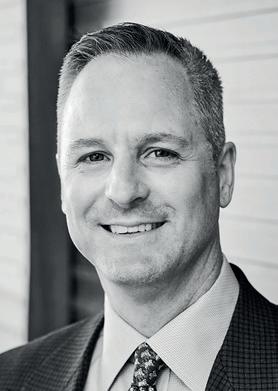
DJ Paoni, CEO of Certinia:
The macroeconomic environment is undergoing a tectonic shift. The era of easily accessible capital is giving way to a time when capital has real costs, necessitating a shift from aggressive revenue growth to a focus on profitability. This shift will transform professional services teams from cost centers into profit drivers, expected to be either profit-neutral or significantly contribute to the bottom line.

Linda Yao, chief operating officer and head of strategy, Lenovo Solutions and Services Group:
Faced with an evolving macroeconomic and competitive landscape, businesses will be focused on deriving more value from their IT spending in a couple of ways. The first is they will demand more flexibility in their operations, in terms of having their investments scale with the value they return. They will want more predictability in their cash flows, whether that means using technology to stabilize revenue growth or achieve expense savings, or implementing that technology in a way that allows for predictable cash flow payments.
IT spending on legacy infrastructure will shift to spending on next-generation technology and grow rapidly in the next five to ten years as customers modern-
“EVERY MEMBER OF THE EXECUTIVE TEAM WILL BE EXPECTED TO HAVE A CERTAIN LEVEL OF DIGITAL CURRENCY.”
LINDA YAO / LENOVO SOLUTIONS AND SERVICES GROUP
ize or revamp their IT stack end to end. This includes moving from legacy IT systems to hybrid cloud, adopting more virtualized and interconnected IT environments and eschewing traditional software licenses for highly personalized tech on demand.
MORE CIOs COULD BE THE NEXT CEO
Linda Yao:
With technology becoming the focal point of nearly every business, especially those from Industry 4.0 leaders, it’s likely we will see more CIOs attain the CEO role or be set up to lead the company into a new generation.
Every member of the executive team will also be expected to have a certain level of digital currency and AI knowledge and to speak about tech more fluently, whether it’s the CMO or CHRO. Even functions that were never enmeshed with the CIO’s role will find themselves working closely with the IT team in the year ahead.
GREATER OPPORTUNITIES FOR THE ERP SECTOR

Maureen Robson-Norman, leader and partner, EY UKI:
Another key focus for 2024 will be how ERP platforms can help enable leadership to understand their level of business resilience. Over the past few years, businesses have experienced an unprecedented period of change characterized by multiple headwinds. A tighter regulatory framework, particularly for the financial services and TMT sector, means there’s a greater focus on how businesses can learn, prevent, adapt, respond to and recover from operational and service disruptions. This offers a real opportunity for ERP platforms to provide leaders with real-
38 ERP TODAY | Q1 2024
| EXPERT OPINION | TECH PREDICTIONS
“A TIGHTER REGULATORY FRAMEWORK MEANS THERE’S A GREATER FOCUS ON HOW BUSINESSES CAN LEARN, PREVENT, ADAPT, RESPOND TO AND RECOVER FROM DISRUPTIONS.” MAUREEN ROBSON-NORMAN / EY

time insight, allowing them to make informed investment decisions to increase business resilience.

Claus Jepsen, chief product officer and CTO, Unit4:
ERP is going to become more automated and turn into what we call pervasive ERP: lighttouch, role-based, with users prompted to hand off activities to digital helpers. For comparison, look at the example of the database, which was once an almost obsessive topic and where people cared a lot about which database they used, the brand or its associated tools. Now, nobody cares. The same happened with cloud and it is going to be the same with ERP. It becomes one of those technologies that everybody needs, and everybody uses different parameters based on what they need to do. They go for the best solution
to deliver a desired outcome and are less focused on how it goes about reaching a certain outcome. Effectively, an ERP is a database with a predefined structure, so it maybe makes sense that the perceptions and opinions follow that same direction of travel as the database.
PERSONALIZED PRODUCTS AND BUSINESS RESILIENCE

Omkar Nisal, UK and Ireland MD, Wipro:
Personalization will become the new normal. Enabled by configurable and intelligent processes, deeply personalized products and services are now expected by customers - creating a need for variant management and changes to manufacturing processes. We’ll see efficiency driven by hyper-automation. With customer expectations rising but budgets
often remaining fixed, organizations are leveraging technology (such as Gen AI, 5G, IoT, etc.) to do more with less and find flexible, reusable solutions.
Business resilience will remain a top priority. Businesses are prioritizing operational and technology measures to be resilient to cyber-attacks, economic downturn, environmental events and unforeseen challenges.
Sustainability will become more of a business imperative. Being responsible and sustainable is influencing access to capital, driving proactive risk and regulatory management.
QUANTUM PROJECTS

Ian West, head of technology, KPMG UK:
Until now, headway in UK quantum projects has been limited, held back primarily by concerns about their
visit us ERP.TODAY 39
MAKAROV/SHUTTERSTOCK.COM
regulation and security. Organizations are generally unsure of how to take advantage of this potentially transformative technology, but I anticipate there will be something like a quantum epiphany in 2024 as understanding of quantum and its use cases improves. This will translate into a surge in investments in quantum projects, and organizations that already have resources dedicated to quantum technologies will see a return on their investment.
To compete as a global economy, the UK must be at the forefront of innovation. Therefore, it was promising to see the government publish its quantum strategy in March 2023, including suggestions for how to “prepare our wider economy for the quantum revolution”, and the Chancellor announcing his five “quantum missions” in the Autumn Statement.
However, to make real headway, organizations need clear regulations so they can use quantum technologies with confidence.
WHAT’S AHEAD FOR PROCUREMENT

Etosha Thurman, chief marketing and solutions officer at SAP:
As we enter 2024, procurement organizations will continue to focus on cost containment and supply continuity in order to bring value to their businesses. These have traditionally been the primary value drivers and in today’s economic environment, I see this continuing. The opportunity will be maintaining the expanded voice earned with stakeholders during the volatile, crisis-riddled past few years, given the resurgence of hyper-focus on cost containment.
The challenge facing procurement will be how to tackle all of this successfully. What we’ll see is the use of innovation like GenAI, spend analysis and category management solutions
to not only provide relevant, real-time business insights, but importantly, to increase the efficiency and productivity of procurement teams, giving more capacity to focus on the strategic work stakeholders now expect.
RESKILLING TO BUILD A MORE ADAPTABLE WORKFORCE

Cathy Mauzaize, president of EMEA, ServiceNow:
Where many started 2023 with a string of workforce reductions and layoffs, the fading threat of a recession means that the demand for digitally skilled talent has rapidly risen again. Reskilling employees will become a critical strategy, as companies face an increasingly competitive race - and demandfor talent.
With skilled tech workers in short supply, businesses will need to amplify investments in upskilling and reskilling to build capabilities internally, especially around AI. Offering robust training programs and learning opportunities
CYBERSECURITY TRANSFORMATION

Robert Graham, customer security assurance lead EMEA, Zoom:
Going into 2024, the cybersecurity landscape will continue to see a profound transformation. Here are key trends I foresee that will shape the industry next year:
Emerging AI technologies in cybersecurity will aid cyber attackers before they help cyber defenders, and small and medium businesses will become more important targets as larger organizations with the funding will strengthen their cyber defenses.
Organizations will increase their scrutiny of suppliers’ cybersecurity posture and practices, with some larger shops requesting fourth-party security evaluations - that is, demanding third-party risk management from their suppliers.
Plus, organizations will demand that their cybersecurity teams achieve enhanced effectiveness at either equal or even reduced budget levels. Many cy -
“ERP IS GOING TO BECOME MORE AUTOMATED AND TURN INTO WHAT WE CALL PERVASIVE ERP: LIGHT-TOUCH, ROLE-BASED, WITH USERS PROMPTED TO HAND OFF ACTIVITIES TO DIGITAL HELPERS.” CLAUS JEPSEN / UNIT4
will also be key to attracting and retaining top talent. Companies that invest in their people’s growth will gain a longterm competitive advantage. Closing the global skills gap could add $11.5tn to global GDP by 2028, according to the World Economic Forum, so reskilling should become a strategic business priority, not just an HR initiative. With the right vision and tools, companies can build workforces with adaptable skill sets ready for whatever the future may hold.
bersecurity teams will work to squeeze more results out of current investments or demonstrate operational efficiencies. Human resources departments will be increasingly open to hiring additional junior cybersecurity staff, while line managers will be expected to do more to upskill the talent they have.
Geopolitical concerns will spill over into more cybercrime as isolated nationstates and splinter groups look to cyberattacks as a latent source of funding for politically unpalatable activities. Cyber-
40 ERP TODAY | Q1 2024 | EXPERT OPINION |
TECH PREDICTIONS
“ORGANIZATIONS WILL INCREASE SCRUTINY OF SUPPLIERS’ CYBERSECURITY PRACTICES, WITH SOME LARGER SHOPS REQUESTING FOURTH-PARTY SECURITY EVALUATIONS.” ROBERT GRAHAM / ZOOM

attacks will still not be felt as physical damage just yet. They will continue to act as digital disruptions, but significant ones.
ESG A KEY DRIVER TO BUSINESSES ACHIEVING CIRCULARITY

Maggie Slowik, global industry director for manufacturing, IFS:
With increasing global scrutiny on sustainability, consumers and businesses alike are after
more transparency when it comes to ESG and sustainability, while also wanting to retain their products and equipment for longer.
Some companies are pursuing new business models to drive sustainability, such as circular operations, for example. By using materials over and over again, they not only create resilience through a decreased dependence on virgin materials but also yield more profitability out of the same product.
Accelerating this direction is the speed at which the regulatory landscape and circular economy policies are evolving. These already are, or shortly will, have a profound impact on the ways organizations can operate, both in the near and long term.
ALL EYES SET ON GENAI

Helen Kelisky, managing director, Google Cloud UKI:
2023 has been a monumental year. In particular, we saw the emergence of groundbreaking new technologies and generative AI-powered tools that will transform the way we work, create and interact - and this is just the beginning! The technology isn’t just changing the game – it’s creating a whole new one. Expect to witness even more UK businesses across all industries using GenAI
visit us ERP.TODAY 41 MAKAROV/SHUTTERSTOCK.COM
“THERE WILL BE SOMETHING LIKE A QUANTUM EPIPHANY IN 2024 AS UNDERSTANDING OF QUANTUM AND ITS USE CASES IMPROVES.” IAN WEST / KPMG
to unlock everything from predicting issues before they even happen, to deeply intelligent customer services.
Get ready for a paradigm shift: GenAI will revolutionize how businesses understand and leverage their data, breaking free from the limitations of traditional data analysis. GenAI’s natural language prowess will unlock a new era of human-data interaction for businesses, elevating how they extract insights, make decisions and personalize experiences. Databases that deeply integrate GenAI functionality with realtime operational data will begin to work alongside knowledgeable colleagues, sparking and informing conversations about what may help, aid and boost sales. The businesses that don’t bring GenAI closer to their analytical systems will struggle to compete against those who do.

Rob Smithson, business applications lead, Microsoft UK:
In 2024, we’ll continue to see the adoption of AI, with empowering workforce productivity at the forefront.
With AI copilots, business applications are undergoing a fundamental
change for the first time in over 20 years, from data entry and retrieval platforms to becoming fully assistive experiences, informed by business data. AI will allow businesses to automate tasks with unparalleled speed and efficiency, providing employees with more time for creative and strategic endeavors. Organizations must now commit to empowering their employees and cultivating an environment that maximizes productivity through AI.

Prince Kohli, CTO of Automation Anywhere:
Amid geopolitical uncertainty, organizations are racing toward digital transformation. This new reality is ushering in a paradigm shift in how we engage with technology. With this context in mind, I’m predicting several new trends will emerge in 2024.
Automation and AI will drive billions of dollars in enterprise value - enterprises are poised to realize substantial benefits from the adoption of AI and automation. However, this will only apply to organizations that see the combination as an integral pillar of enterprise architecture rather than just a cost-cutting tool.
The chief AI officer will disappearrather than the chief AI officer, the chief
technology officer will be the natural choice for steering AI strategy. The CTO will educate and guide the rest of the Csuite on the value of AI, a strategic shift that places AI at the heart of more business decisions.
Bad actions will use AI to influence critical events. Bad actors, disgruntled employees and outright criminals can use AI to impact businesses, amplifying the potential for widespread misinformation and challenges in safeguarding the integrity of simple business practices.
AI GOVERNANCE

Dr Edward Challis, head of AI strategy and general manager for communications mining, UiPath:
Enterprise leaders certainly recognize AI’s potential value, with more than 80 percent of businesses set to use GenAI by 2026. However, the ability to deploy the technology responsibly is still largely immature, with concerns from executives around risk and governance. 2024 will be the year that this perception changes and organizations see AI progress from aspiration to implementation.
The next year will also be one where companies recognize the critical importance of putting people at the center of their AI strategy. A key part of realizing AI’s value is creating processes for employees to review the output of machines. As a result, we’ll see greater adoption of human-in-the-loop validation and con-
“WITH SKILLED TECH WORKERS IN SHORT SUPPLY, BUSINESSES WILL NEED TO AMPLIFY INVESTMENTS IN UPSKILLING AND RESKILLING TO BUILD CAPABILITIES INTERNALLY, ESPECIALLY AROUND AI.” CATHY MAUZAIZE / SERVICENOW

42 ERP TODAY | Q1 2024 | EXPERT OPINION |
TECH PREDICTIONS
RATTANA.R/SHUTTERSTOCK.COM
trol measures on AI systems. This will further enable enterprises to take big strides in AI deployment to automate and optimize their processes while ensuring that they make their staff an important part of the journey.
BARRIERS TO HARNESSING ADVANCES IN AI

Maynard Williams, managing director and CTO UKI, Accenture:
Data silos and a lack of connectivity between data sources, for example, remain one of the biggest limiting factors in a company’s ability to harness advances in AI. “Aimless innovation” is also a core challenge to realizing value, with many organizations running multiple AI proofs-of-concept without an overarching strategy in place to tie them together.
Moving into next year, leaders will reach a crunch point where they will no longer be able to delay the kind of “open heart surgery” required to overhaul their legacy systems - meaning foundational work on their cloud infrastructures and interconnected platforms with a clear vision in mind. The reassessments they make to their tech stack are crucial as the investments made over the next year will define their enterprise for the next decade. Those who fail to recognize this early risk falling into the trap of aimless innovation and spending on proof of concepts that fail to scale in the long term.
GENAI’S NEGATIVE IMPACTS WILL BE HARD TO MANAGE EARLY ON

Sridhar
Ramaswamy, CEO Snowflake:
Although GenAI is reimagining how we interact with machines, there are some immediate
“ENTERPRISES WILL PRIORITIZE PLATFORMS THAT FACILITATE THE INTEGRATION OF COMMONLY AVAILABLE DATA AND PRIVATE DATA, POSITIONING THE HYBRID CLOUD AS A CORNERSTONE FOR AI SUCCESS IN THE COMING YEAR.”
ERICA LANGHI / RED HAT
concerns that will be particularly challenging in the early years of widespread AI and language model adoption. For a lot of people involved in what we loosely call “knowledge work,” quite a few of their jobs are going to vaporize. Rapid change makes it hard to quickly absorb displaced workers elsewhere in the workforce, and as a result, both the private sector and governments will need to step up.
Finally, advances in AI will exacerbate the digital divide that has been happening over the past 20-30 years between the haves and have-nots, and will further increase inequality across the globe. I can only hope that by making information more accessible, this emerging technology leads to a new generation of young adults who better understand the issues and potential, and can counter that risk.
THE RISE OF HYBRID CLOUD IN AI

Erica Langhi, senior solution architect, EMEA, Red Hat:
As we move further into 2024, the strategic integration of hybrid cloud solutions into AI initiatives is set to become a defining trend. Organizations will recognize the imperative of leveraging both on-premises and cloud resources to derive maximum value from their AI endeavors. This trend is driven by the need to balance data security and sovereignty with the computational power required for sophisticated AI models. Decisionmakers will increasingly opt for hybrid cloud approaches that enable seam -
less collaboration, agility and lifecycle management, thereby overcoming the pitfalls that have historically hindered AI projects. Successful enterprises will prioritize platforms that facilitate the integration of commonly available data and private data, positioning the hybrid cloud as a cornerstone for AI success and innovation in the coming year.
DEMAND FOR INCREASED PRODUCTIVITY DRIVES ALL
 Paul O’Sullivan, senior vice president of engineering, Salesforce UKI:
Paul O’Sullivan, senior vice president of engineering, Salesforce UKI:
The evolution of technological revolutions, from the second era of electric, to now the fourth era of AI, is marked by a relentless quest for increased productivity. While organizations seek to develop AI strategies to enhance business performance and cost efficiency, the cautionary balance between speed and trust will remain critical for the foreseeable future.
I anticipate significant advancements in digital transformation in 2024, with the emergence of new business models, converging technologies such as robotics, AI, automation, IoT, A/VR and increased demand for data-driven experiences.
Fortune will favor the brave in the AI revolution. Accelerated impacts on businesses will see rapid wins and losses, whilst change management and adoption will pose challenges, emphasizing the need for a flexible approach. Organizations need to operate in an environment that both encourages innovation and has the necessary guardrails in place.
visit us ERP.TODAY 43
VIVIEN BOCHE MEANS BUSINESS
BY GRACE BARRINGTON
FOR GEN Z, TIKTOK IS THE NEW SEARCH ENGINE - AND SAP’S VIVIEN BOCHE
KNOWS THAT IDEAS SELL BEST IN A DIGESTIBLE, 60 SECOND VIDEO
While SAP superstar Vivien Boche may prefer to introduce herself humbly as an “extroverted nerd”, her achievements speak for themselves: over 12,000 followers on LinkedIn, a regular keynote speaker and evangelist for platform technology and women in tech, and appointed before the age of 30 as a senior director at the SAP Center of Excellence.
ERP Today spoke with Boche about how she has shaken up the workplace with a fresh, modern approach to engaging clients in SAP technology, the storytelling and people skills she’s built along the way, and the challenges which come
with being a hyper-visible and successful woman who is making significant strides in the industry, with no plans to slow down anytime soon.
Grace Barrington (GB): Why do you credit yourself first and foremost as being an “extroverted nerd”?
Vivien Boche (VB): What I mean is that I know a lot about technology and can talk to our customers and understand their technical and business challenges, [but also] empathize with them and have a conversation about what they’d like to do. It’s really useful that I can also talk about [technology] on various different levels. There is obviously the very high level where you need to
have a very short answer and explanation, or you need to go very deep and in detail about how things are working.
GB: For young professionals wondering how you’ve achieved so much, how did you get here?
VB: What’s encouraging is that I don’t have a technical background and nowadays I work in a very technical role. I studied Economics and then had the pleasure to study at four different universities in four different countries (Germany, Sweden, Denmark and the Netherlands).
When I did my Masters in Copenhagen, SAP had this student program where they bring students, their cus -
44 ERP TODAY | Q1 2024

visit us ERP.TODAY 45
tomers and SAP together, and they give them real-life customer cases to solve with the help of innovative technologies (e.g. AI, digital twins...) And I was likethis sounds amazing!
I started to work at SAP, in Denmark. Then I got selected for SAP’s talent program where you get sent to a training program in Silicon Valley, America for half a year. After that, I moved to the UK, working in a solution advisor role centered around innovation and the technology platform SAP BTP. So, I’m a German who works for a German company but has never worked for them in Germany!
In my UK role at SAP, I worked with customers one-on-one, and I really enjoyed that. [But] what I noticed was we often were talking on a very deep level and that’s the time where I also watched a lot of TikTok videos…
GB: So you started making TikTok-style videos that explained SAP technology in short, digestible ways. It’s fair to say they took off! Now some call you a “corporate influencer”…
VB: Yes. People nowadays call me a “corporate influencer” because I’m sharing - not only those TikTok-style videos - but generally different interests in tech news, innovations, women in tech and career growth tips.
VB: Was it only because of social media? No. Is it helpful that you are known? Yes, but your work, your attitude and your results still need to speak for themselves. Your network is not everything.
In my workshop course about professional branding, I teach that it is important that you need a close group of people who speak highly about you while you are not in the room. Surround yourself with people who will mention your name in a room full of opportunities.
GB: What do you think has been integral to building such a strong online following?
VB: It needs to be authentic. With time, people came to me like “Can you please share this…” “Can you please share that…” and I had to say, “I’m sorry, I’m just sharing things that I really believe in”.
PERFECT IS ACTUALLY THE LITTLE BROTHER OF “NOT DOING IT”
For me, it’s worked nicely because I feel like LinkedIn is a lot of blowing a “bubble” which shows that you need to be more human and not this blown up personand that is what I’m trying to do. For example, I also share negative experiences like being low on energy in January when it is dark outside or when I had a project fail. My genuine philosophy is that I only post when I feel like it; otherwise, it is not authentic.
you are “frozen” a bit. But then what? Should you just laugh it off? Should you make a face? But maybe then you are “unfriendly” or they say: “Why is she taking this so seriously?” So, it’s a very new form of reality and you have to learn how to work with it. For me, it was not easy, but I was glad to have a strong support network of like-minded colleagues, my fiancé and friends. They encouraged and supported me.
GB: Do you find that through these online, parasocial relationships, people make assumptions about you?
VB: This can be the worst part. People think these posts don’t take a long time. Or make assumptions about the work you do - that you don’t do enough, that you’re not doing anything else.
It’s a bit sad that people aren’t recognizing that every job is hard and there are so many obstacles. For example, I believe 65 percent of my time, I deal with confidential information that cannot be shared online. So naturally, more than half of my work is not visible to people. But people still make assumptions. So, when do I prepare all the content that I share? Before work and after work.
GB: Looking at the positives, how have your posts impacted how people engage with SAP technology?
Besides that, I established myself as an expert in this technology platform space [and] got offered a role in the SAP Center of Excellence - which is quite unusual for someone my age. It came down to hard work, knowledge, expertise, consistency and the leadership believing in you. And I am very happy they did because I was the only woman in the team when they offered me that role. Which was scary, I will not lie, but I also thought, somebody needed to be first.
GB: So do you think your appointment at the Center of Excellence was directly connected to your success on platforms like LinkedIn?
GB: As you’ve developed more of a platform, have you had to build new types of resilience?
VB: I talked about the positive voices, but the negative voices are of course there as well. Messages, comments when you meet people. I remember I was once eating lunch, having a nice conversation and then someone dropped a really big bombshell… and you just have your mouth full like, I’m not sure how to react to this right now.
I feel that connects to how women have to react to some sorts of comments. In the initial reaction, maybe
VB: I have heard people say: “SAP BTP is cool.” “SAP BTP is fun to understand.” “I finally get it now.” And that it is associated with a fresher, different look.
I’m always trying to think - okay, what’s the best way to digest this for the other side? Because if I don’t even understand things, and I do this day in and day out, then how should a customer or a partner understand it? So, this is where I’m trying to revisit the content and adjust it, and that’s where the responses from people have been really positive.
GB: What have you learned through this process?
VB: First, it’s super hard to simplify
46 ERP TODAY | Q1 2024 | INTERVIEW | ERP CAREERS
things. It’s harder to explain things in two minutes than it is in ten, thirty or sixty.
The other is learning how to explain things in different forms. If I am talking to friends who have never heard about SAP BTP, I can explain things. I can talk to people who have maybe heard about SAP BTP. And I can talk to people who are really professional experts. You need to know how to adjust your language. And I think that is a skill which ideally everybody should learn, but it’s not easy.
We often fall into the trap of using similar language for every occasion. As we are technical experts, people tend to go very deep from the beginning, instead of establishing the ground first.
Another learning is that you need to deliver bitesize chunks. Because what I often see is that people display all their information at once, for example on a slide. [But] you actually should just build it up. You should start at the foundation and say, okay let’s learn this first, then we look at this, and then we look at this, maybe you have some animations or, and you do it in bitesize areas because the human brain is just capable of learning step by step.
To sum up, I’ve learned how to simplify, adjust my language to every audience and deliver bitesize chunks.

I ASK PEOPLE TO REALLY KEEP AN OPEN MIND, SAYING YES INSTEAD OF NO
GB: What are the skills you think young professionals can bring to the workplace?
VB: For me, it’s about politely challenging the status quo. Just because things have run this way doesn’t mean they need to continue like this. So, I always encourage [people I mentor] to speak up, to raise questions - because this is something that I have noticed does change things.
Also, I think this hunger for doing something - I see it a lot when people are joining an organization, maybe from university, or have worked one or two years, that [they] bring the hunger and energy. But then they get to a stage which is like
five or six years in the job, where they are slowly losing it and then it’s like “Oh, this is a day-to-day job”.
Keeping this hunger and this energy to say “Hey, let’s change things around”, that is also something which I also try to force myself to do. But also try to find like-minded people and say: “Hey, let’s do something, let’s change something, let’s find a project that energizes us that we can work together on and believe in.”
I ask people to really keep an open mind and keep on saying yes instead of no. I often hear things like “Yeah, but…” or “We have already done this” and I think if you’re using these terminologies, just delete them out of your vocabulary.
GB: So you feel that it’s important for managers to create room for their employees to try new ideas?
VB: I think there should always be space where you can explore what my current manager calls “pet projects” - finding something that you are passionate about and can spend ten percent of your work time on.
A lot is also about observing and tak-
ing a third-eye perspective. Thinking, okay, the company is running in this way and we have this process, we do this in this way - but you might have an idea for going a different way. And I feel like me doing the simplification of complex technologies was exactly that. I observed that all the explanations of SAP BTP were lengthy. I observed that all the slides were lengthy and weren’t really broken down at the time. So, let’s try and find a format that really boils it down to its essence. And then you figure out a process for making it happen. So, I feel everybody should try to get time to work on their ideas, and every manager should encourage it.
GB: What would be your advice to people who want to establish themselves more online?
VB: Do it. Don’t overthink it, just do the first part, even though it’s not perfectperfect is actually the little brother of “not doing it”.
GB: And where is all of this hard work heading for Vivien Boche?
VB: I don’t know where I want to go in five years, but I do have the dream of being a CTO one day.
visit us ERP.TODAY 47
Delta
Air Lines takes flight with AI tools the land of SAP’s Joule
As the American airline brings its HR AI vision to life, will the intelligent land of Joule be its next destination?
BY STEPHANIE BALL

48 ERP TODAY | Q1 2024

chocks away!
ILLUSTRATION: STUDIOSTOKS/SHUTTERSTOCK.COM
One of the major airlines in the United States, Delta Air Lines offers tickets and flights to almost 300 destinations across six continents, employing over 100,000 people in the process.
Last year saw the airline deliver its services to over 190 million customers, transporting not only people but also holdings with Delta Cargo - from the likes of life-saving medical deliveries to fresh flowers and seasonal produce.
As companies across the SAP landscape and beyond find their ears twitching at every mention of AI, for better or worse, ERP Today asks how Delta’s HR department intends to make real use of the advancing technology, touching on chatbots, cloud and the potential of SAP’s new Joule copilot.
Exploring its history with SAP, Delta has been a customer for going on two decades, and in 2014, the company undertook a massive HR transformation to replace some remaining early 90s legacy systems with an SAP core and SuccessFactors modules, lighting the runway for further innovation down the line.
Tim Gregory, MD, HR and innovation and workforce technology at Delta Airlines, was hired “to land the plane there, so to speak” and complete the project back in 2018. This included the implementation of ECC, payroll, and all the SAP SuccessFactors modules, with the exception of recruiting and EC (Employee Central).
Since then, Gregory has set sights on boosting the airline’s use of AI technologies, focused on “the place where people and technology come together” - human resources. The goal? To deliver better employee experiences through the use of technology, “primarily SAP, or the SAP shop” says Gregory, “to build within the hearts of our employees a desire to bring discretionary effort to delight customers”.
Delta’s AI destination: career take-off
In the midst of its latest implementation for its HR department, Delta is deploying a Talent Intelligence Hub, a relatively new solution in SAP SuccessFactors, due to go live for the airline this Spring. Designed and collated using embedded AI tools, it’s hoped to create greater career progression opportunities and unlock and nurture new skills in the Delta ranks.
“We have an initiative within Delta to focus on what we call skills first,” shares Gregory, “which puts a laser focus on the skills that folks bring to the table as opposed to where they got them. Right

We want to build within the hearts of our employees a desire to bring discretionary effort to delight customers
now, we’re really focused on unlocking the skills within our workforce enabling folks to have multiple careers, enabling our frontline - folks who are out there every day working with customers - to have the ability to move from hourly jobs into salaried roles where they can take that real-world experience working with customers and bring it to a higher level of influence and strategy across our company.
“We’re very interested in the quality and the expertise that people can apply to those skills, as well as breaking down a lot of the traditional structures, job hierarchies and typical ways in which career progression occurs. The intelligence hub is going to be a key part of that and the growth portfolio looks to bring a level of personalization which is really, really important to us.”
Working alongside SAP on the project, the HR head recommends coordinating very closely with the product development team to provide feedback, along with linking up with several other companies participating in similar design workshops.
Alongside SAP’s Skills Ontology, which covers over 30,000 skills present across industries in the global job market, AI tools are allowing Delta to develop its own Attributes Library, based upon the skills expressed by the longstanding people within the company.
Using natural language processing, the teams can harvest those skills definitions from their operations to train employees more seamlessly and in the way a Delta person speaks. From there, the airline has also been working with SAP and other users to build proof of concepts for
50 ERP TODAY | Q1 2024 | USER SUCCESS | HCM TOOLS
Tim Gregory
generating predictions for a variety of use cases, including job descriptions.
“We’re in the process right now of building a number of prototypes and we’re very, very pleased with the progress that’s being made there,” explains Gregory. “They’re the building blocks of all the skills that kind of unite us as a company and our culture and our values and then allow us to expand that into detail with AI.
“It blends what HR traditionally is comfortable with and how we talk with real-world, highly detailed and highly accurate expressions of the skills necessary to run a company.”
For the HR head, the strength of the solution is best shown in text-rich environments that HR is filled with, including legal, procurement, and so on, making that department one of the lowest-hanging fruits for the technology.
“It is so text-intensive and so much of the innovation has occurred in the text space. What it does really well is understand language - what it doesn’t do as well is math. We’re also seeing the emergence of image generation, image recognition and there are plenty of use cases in that space, in our industry, to be able to recognize something using ML and AI.
“There’s an endless number of use cases as this technology matures and we go from just text to audio and video and these multimodal systems start to come online.”
The AI cloud cut-off
With SAP limiting some of its latest AI innovations to its cloud customers, ERP Today asks the burning question - is Delta going to make the core S/4HANA shift?
Gregory is diplomatic in his response here: “A brilliant question - we’re in the midst of evaluating the best course forward right now, as with many companies. There are some appealing attributes of both. We’re working very closely with finance so that we can look holistically at our labor costs and our cost centers and org units and align around position management.
“Clearly, there are some benefits with

We’re really focused on unlocking the skills within our workforce enabling folks to have multiple careers
ECC for that sort of strategy, but the S/4 route in terms of total expenses, and so forth, also has its appeal as well. We’d love to be able to co-design the move there, also on-premise. We’re actively engaged in making that determination.”
The brightest AI Joule?
Available only for cloud customers, and going beyond the preprogrammed response generators of the past, Joule has been marketed as a copilot and personal assistant fueled by GenAI, a combined leap forward from SAP’s previous products in this area.
Uniting conversational abilities as a copilot and digital assistant/chatbot, Joule is said to be built to communicate directly with businesses’ backbone so -
lution sets, from HR to finance, supply chain, procurement and customer experience, as well as into SAP Business Technology Platform.
It’s arguably too soon to expect stories of Joule success just yet, but the question is, are companies considering this intelligent assistant as a viable investment for their needs in the near future?
This wouldn’t be the first chatbotstyle implementation for Delta, with the company having engaged in the chatbot world for a few years now in its customer experience (CX) services. An early adopter back in 2013, the company was said to have “won big” with its conversational interactive voice response (IVR) system saving them $5m across the 36 million calls handled per year. But, for its HR management, as well as its AI journey, will Delta be keeping Joule, and therefore cloud, in mind?
“We mirror a lot of what is happening on our CX side of the house,” says Gregory. “We take a lot of those strategies around personalization, elevated experiences, and we bring it over to the EF
visit us ERP.TODAY 51
ILLUSTRATION: ROGISTOK/SHUTTERSTOCK.COM
[executive functions] side of the house.
“Personalization is a big push for us. What we’re seeing is this sort of evolution from intent-based conversational bots to generative AI, which is fascinating in how quickly it’s evolving. We’re exploring that world where conversational, generative AI and bots come together.
“One of the things that was really interesting about Joule, when you consider HR and the employee experience, is there are three channels traditionally [through which] HR is delivered to the employee population, so oftentimes employees have channel confusion, right? Particularly for new employees, and we’ve hired a lot of new folks recently, and that ability to move gracefully across those channels is really important - it saves a lot of time and can boost the employee experience.
“A lot of times you come into an expectation, particularly if you’re a digital native, thinking ‘I should be able to do this online and there should be no issue with this’; Joule can help manage that expectation and ease that transition through the channel, so we’re really excited about that potential.”
But, getting down to the realities of implementation, beyond cloud shifting, the main blocker for Delta is data.
“We’ve developed our use cases around that focus on skills at the early part of the year, so we’ve got a roadmap for the use of generative AI and bots will be included in that at some point. Ultimately, we are not in our roadmap right now looking at bringing employee data into this at all,” explains Gregory.
“We want to learn about the skills and job descriptions and training and then there’s a chasm between teaching the machine those sorts of things versus bringing in people data, and spanning that chasm would require a great deal of consideration, including work with our legal and compliance teams and so forth.
“So we’ll cross that bridge when we get there but we’ve got a lot to learn about just generative AI, multimodal AI, these RAG (retrieval-augmented generation) models; there are various patterns emerging, fine-tuning and how does that
play into it, model selection, training methodologies... Getting really, really good at that will build credibility within our IT organization and HR and with our employees, so that once we get to that place, employees know that they’re in safe hands.”
Once built, there is surely a valuable long-term and appreciating asset to be had in the likes of copilot assistants such as Joule, and though Delta, like other SAP users, no doubt sees the benefits, technology heads are currently erring on the side of caution when it comes to processing employee data to fuel these GenAI tools for now. So, though it’s probably too soon to say if Joule, as the latest in a line of SAP releases, is set to be a hit for users, it’s certainly piquing businesses’ creative curiosity about what they can achieve next with this technology and how to ensure a safe take-off.
A brief assisted history of SAP chatting
So, where did Joule come from anyway?
In its half-century history, this is hardly the first time SAP has delivered a chatbot product.
Rewinding the clock to a few years ago, 2017 saw the launch of SAP CoPilot digital assistant, a web application and platform working in tandem with SAP Leonardo to build conversational applications, with the release of S/4HANA 1709.
Then, after acquiring RecastAI back in early 2018, SAP launched SAP conversational AI (CAI), an end-to-end bot-building platform that allowed users to train, build and connect chatbots to business assets, whether that be a website or a social media page, with retail and manufacturing market sectors dominating the use cases here.
Spurred on by the pandemic, the use of chatbot communication then expanded across
a breadth of business types, everyone from banks to airlines. Looking forward, SAP began hinting at its intention to combine all its conversational AI tools together into one offering and, as GenAI technologies have advanced, did just that. The launch of SAP Joule has followed, in tandem with the endof-life-ing of SAP CAI in Dec 2023.

But, as we say bye to CAI with the announcement of Joule, for many users the question is what will this new product actually deliver? Is Joule set to be a hit or a fleeting fad with SAP users?
Going beyond the preprogrammed re-
sponse generators of the past, Joule is marketed as a copilot and personal assistant fueled by GenAI, a combined leap forward from SAP’s previous products that, the company promises, “will know what you mean, not just what you say”.
Uniting these conversational abilities as a copilot and digital assistant/chatbot, Joule is said to be built to communicate directly with the very backbone of businesses’ solution ecosystems, from HR to finance, supply chain, procurement and customer experience, as well as into SAP Business Technology Platform.
Here, we see SAP turning its focus to augmenting the S/4HANA cloud experience as a whole with chatbots, seeking to provide both businesses’ employees and customers with a speedier and more scalable conversational experience.
| USER SUCCESS | HCM TOOLS
52 ERP TODAY | Q1 2024


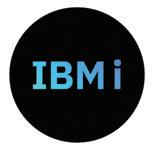



IS BUILDING BACK BETTER A REMOTE POSSIBILITY? WITH HYBRID WORK PLACING HUMAN RESOURCE TEAMS AND PLANNERS UNDER PRESSURE, REBUILDING THE WORKFORCE IS PROVING A TRICKY CUSTOMER.
 BY HOLGER MUELLER
BY HOLGER MUELLER
54 ERP TODAY | Q1 2024
SHELLYGRAPHY/SHUTTERSTOCK.COM
Workforce g o ne wal kabout
The tech industry is finding itself in a post-pandemic hangover and, as with most hangovers, this one follows an eventful ride: Pretty much all tech vendors performed well during the pandemic, and started hiring, creating more competition for a specialized workforce and driving up labor costs.
As it turned out - growth didn’t stay in place, but plunged, and a global economic slowdown did not help either. To be fair - it was not only tech vendors: Algorithm-driven Amazon failed at predicting demand in the post-pandemic economy and also needed to adjust its overall workforce accordingly.
Recoiling, many tech vendors then cut their hires along with numerous other slimming down measures to cope with the heat of dropping profits. Still today,
the tech-centric workforce has found itself building back from the slump with many new and fundamental workforce changes. But, before we dive in on what the new best practices are for workforces and hires, let’s look at the biggest changes that have occurred.
Talent pools went from local to global
Before the pandemic, it was clear that talent acquisition for most tech jobs would be sourced locally, in a feasible traveling range of the office location where the job opening was. That has changed to talent sourcing being able to go beyond the office location, going first to local then to adjacent time zones - all the way to global. Today the percentage of tech workers being employed permanently on other continents is steadily growing, often

reaching double-digit percentages. Adding temporary longer work stints, 20-30 percent of the tech workforce has worked remotely for longer periods over one and under three months. With 93 percent of enterprises looking for remote workers, talent pools remain anything from hyperlocal to global.
Work from home/hybrid is here to stay
On the whole, people are seeming to prefer to work from home, especially when there is no benefit from working in an office. The exception are enterprises that, out of solidarity, want a presence in office for all workers, as a large percentage of non-tech workers still need to show up in person (see Elon Musk’s no remote work directive at Tesla). In the US, the overall percentage of the in-
visit us ERP.TODAY 55
office workforce has dropped to under 60 percent, with no sign of returning up. And with 98 percent of people expressing an interest in working from home at least part time, full-time in-office work, for the most part, appears to be on the shrinking side.
With almost two-thirds of all workers claiming to work remote at least occasionally, the reality for most has become hybrid working, with a work-from-anywhere policy often being the new normal. Leading the trend here is the tech industry - because of the nature of technology work, the intangible nature of the offering (software) lends itself very well to the work setup (much better than any manufacturer can ever do).
The work/life balance equation will be a struggle to revert, as it turns out that people like their flexibility. Even tech giant Apple has failed multiple times to force its workforce back to the office, with key employees and executives even leaving the vendor.
Realizing this sticking point, executives instead work on minor tweaks to turn the wheel back, with currently the after-work social event being one of the key incentives to come back to work… But with the social activities starting earlier and earlier, some executives are starting to investigate the effectiveness of the strategy.
Remote work may be generational - or not
With almost 40 percent of the 24-35-yearolds working full-time remotely, and one in four working remotely part-time, one of the most interesting questions about the future of work is if remote work is a question of age or generation. Whether the current Millennial generation will keep working remotely into their forties is going to be key for office capacity planning. But, with Generation Z working re-
motely too, much weight pivots on the fact that the following generation has also entered the workplace preferring remote work. On the whole, the trend points to remote work being a cross-generational preference, with older workers gravitating to more in-office settings.
How to rebuild and grow the workforce
Now that we have looked at the unequivocal trends underlying remote work, let’s unpack the winning strategies to help rebuild the tech workforce successfully:
Plan demand better
Many tech vendors have “egg on their face” when it comes to workforce planning. Too many have been too naïve, thinking that the pandemic-boosted economy would get even stronger postpandemic. Today we know it is not. Even more stickily, people are the biggest expense for tech companies: Finding them, hiring them, training them, keeping them is not cheap. While cutting workforce planners a little slack - they have never been faced with a pandemic of this size in a modern economy - it remains key that improved planning will consider that capacity planning needs realism.
Planning models need to improve to avoid the over-hiring that has happened in the tech industry. Alternate scenarios need to be considered and a more balanced approach needs to win in planning.
Companies need to avoid competitive hiring frenzies. A large portion of the over-hiring has been caused by tech vendors thinking they needed to have certain skills in a certain capacity - and were jolted into overdrive by the competition hiring. Similar scenarios rarely end well, and they did not end well in
“MANY TECH VENDORS HAVE ‘EGG ON THEIR FACE’ WHEN IT COMES TO WORKFORCE PLANNING.”
this case for the industry.
Now, workforce planners need to account for the remote worker onboarding reality. It turned out to be hard to get remote workers as fast and productive as people working in offices - see Salesforce’s Marc Benioff’s recent views on the topic, as in an employee note that made it to the press, he suggestively questioned why “new employees (hired during the pandemic in 2021 and 2022) are especially facing much lower productivity”. The state of work is now seeing tech vendors needing to account for longer and more challenging onboarding times… Being opportunistic with hiring is also key moving forward. Non-tech enterprises were strategic here, snapping up the laid-off tech workers, as well as the workers who wanted a change in their work/life balance. Now it is time for the tech industry to get the better people, who look for a faster-paced work culture and for their work to not just affect a single enterprise, but the bigger picture of 100s or 1000s of enterprises.
Managing flexibility moving forward
As we have seen - taking back flexibility does not sit well with today’s workforce, even if the flexibility only came from legal requirements at the time. Executives need to think twice before establishing flexibility on where to work. On the other hand, being one of the first employers to offer flexibility in an area of work will offer advantages to the first movers. So, it is critical to weigh out the pros and cons.
The office is far from dead, but will likely be smaller and different. Smaller because not all people will be at work anymore from nine to five and different because some colleagues will still prefer to be at home, or even at the coffee shop around the corner. So, creating a space that is productive to have (hybrid) meetings and fosters collaboration will be key. Recreating work-from-home spaces will be positive for productivity as people are used to a similar environment. TVs and kitchens are more prominent than in offices of the past for that reason. Plus, the ability to comple-
56 ERP TODAY | Q1 2024 | GUEST CONTRIBUTOR | REBUILDING WORKFORCES
ment the home situation is key - as your workforce may even expect to do activities such as cooking with office kitchen appliances with their colleagues.
Understand the diversity implications
Diversity cannot go amiss either. For instance, we know surveys suggest that more male workers work remotely than female workers, but we also know that female workers rank flexible work hours and location higher than their male colleagues, and that’s just one example. Executives need to keep this and much more in mind to understand what their remote work strategy and office work environment direction will do for diversity and inclusion.
Beware ageism and the hiring “runway” - instead leverage experience. Experience earns more in the tech industry than in most others. In downturns, executives can be tempted to let go of their experienced workers and replace them with younger in-house workers for pure cost-saving motives. Equally, the drive to reshape the personnel cost curve by moving offshore is always an option in the technology industry, but it is often driven by talent availability, not cost. Executives need to balance value vs cost one employee at the time, with the recent decisions on having a “runway” of people a dangerous and slippery construct. In the end, the potential of an employee should be measured by their innate talents, motivation and training options provided by their employers. With the first being a given, the two latter drivers are highly dependent on the employing enterprise. What’s clear though, is that by offering alternate and more flexible forms of employment, including remote work, it can extend work life, enrich the workforce and ultimately help an enterprise.
“OFFERING ALTERNATE AND MORE FLEXIBLE FORMS OF EMPLOYMENT, INCLUDING REMOTE WORK, CAN EXTEND WORK LIFE, ENRICH THE WORKFORCE AND ULTIMATELY HELP AN ENTERPRISE.”
Training and upskilling are crucial
The old best practice of growing internal talent before hiring is still valid. Especially with technology work becoming more complex by the day, onboarding and education costs are only growing. The strategy of re-skilling existing employees to be faster and more efficient remains a good option for employers. What has changed is the way people learn and acquire new skills. Being at the front of learning innovation is key for tech companies and the quality and availability of learning is in the top retention drivers of their workforce.
Foster the new enterprise culture
Enterprise has an organizational DNA and culture. Both need to live in harmony, and executives need to understand what the drivers and promoters for their enterprise’s culture are to establish, propagate and strengthen culture, especially given this will have all changed in the new remote/hybrid working setup.
For instance, a strong argument for returning to the office is the benefit of people seeing each other and communicating and collaborating better. It is the serendipitous moment at the proverbial water cooler, and other random encounters, that are desirable. But is it necessary for people to come to an office for that?
Luckily, we have seen a lot of progress in AI and ML in recent quarters, and the hope is that there will be more help to find these key coincidental encounters
“IT IS THE SERENDIPITOUS MOMENT AT THE PROVERBIAL WATER COOLER AND OTHER RANDOM ENCOUNTERS THAT ARE DESIRABLE. BUT IS IT NECESSARY FOR PEOPLE TO COME TO AN OFFICE FOR THAT?”
wherever workforces are based, that can change work outcomes and accelerate enterprises. Whether these moments are remote, at a local coffee shop or even bar, the key is to figure out how to create these interactions and moments repetitively and at scale.
The best practices for how to manage people have also changed fundamentally post-pandemic. Executives need to keep an open mind towards how this will continue to evolve in the 2020s. Experimentation between offices, divisions and countries is a welcome setup, as it will show what works and what does not. Importantly though, working with any new best practices needs to be propagated and successfully implemented to enable an enterprise to succeed consistently. Finding the right balance is going to be the art.
At the end of the day, the success of a technology enterprise relies on the quality of its people, particularly its leader. People keep jobs with good leaders and quit jobs with bad ones. Demonstrating leadership is even more important in remote and hybrid workplaces than in traditional office setups. Executives not only have to walk the walk and talk the talk, but also foster and train new leadership principles and practices in middle and junior management.
With the tech industry having overhired, and in some cases then overfired, its current period of adjustment to align both talent and spend to the reality of its business can only be a welcome path ahead. In this post-pandemic hangover, the sooner executives understand that their workforces want remote and hybrid work to stay, and the sooner they embrace it, the more successful their enterprise will be.
Holger Mueller is VP and principal analyst at Constellation Research.
visit us ERP.TODAY 57

58 ERP TODAY | Q1 2024
CONFESSIONS OF A RETAIL TECHNOLOGIST
CAN WE GET A BETTER KIND OF CLICKBAIT?
Yoana Cholteeva speaks to Oracle, KPMG and Google Cloud retail experts on the technology saving the day for customer experience.
BY YOANA CHOLTEEVA
Online shopping can be a real gamble. The common expectations of simple and easy browsing from the comfort of your home don’t always come true. The reality is that many retail companies, despite working tirelessly post-pandemic to make their mark, build a recognizable brand and attract more customers, are missing the trick of creating an easy customer experience.
Attention-grabbing sometimes comes at the expense of functionality. Take for example Spanish clothing retailer ZARA’s online platform, widely recognized for featuring pictures of its clothing worn by extravagantly posed models. Contrary to traditional images, which aim to show customers as much of the item as possible, ZARA has been going for a type of magazine editorial shoot - women crouching on kitchen appliances or leaning over fences in a myriad of funky positions that draw attention and entertain us.
This might have made the brand more recognizable with its own kick, adding
to Zara owner Inditex’s net profit jump of 32.5 percent year-on-year for the nine months ending October last year.
But, while not necessarily reflected in the fast fashion retailer’s profit margins, the dubbed “awkward mannequin poses” arguably serve little purpose when a customer is trying to make an informed purchasing decision. With the available pictures rather more imaginative than helpful, the fast fashion retailer has come under fire for unclear item sizing and returns policies, dampening its customer satisfaction ratings on review sites like Trustpilot.
So, is having a well-known, eye-catching brand the most important factor for online retail? In the case of retail and creating a smooth customer experience, maybe it isn’t. And in the era of rapid technological advancements, it might be true that the most revolutionary thing a brand can do is make the shopping experience easy and hassle-free.
Many other well-known and trusted high street brands are also struggling with customer service. For instance, one 2021 Which? survey included the likes of
JD Sports, Homebase, Carphone Warehouse and Debenhams as receiving one-star ratings for resolving customer complaints too. So, what can retailers do to fix this service problem?
Technology companies among Oracle, KPMG and Google Cloud have recently been partnering with retailers to help them analyze the experiences of their shoppers, as well as those visiting their competitors. As a sign of some retailers moving to a new era of tech-led capabilities, brands are utilizing technology to enable the personalized targeting of shoppers and connect digital and physical spaces with store staffing information and needs - in all, allowing them to elevate the overall experience.
Achieving omnichannel style and substance
Recovering from the blow of the pandemic and the lingering economic uncertainty that has particularly hit retailers and the high street, companies are still navigating these challenges with many looking to find innovative ways to attract customers with better experiences.
visit us ERP.TODAY 59
DARKO 1981/SHUTTERSTOCK.COM
Despite the challenging market conditions, Jonathan Attia, partner and head of digital products of KPMG UK, says that the market is evolving quite rapidly, with technology continuing to be a huge driver of change in the retail sector.
“Leading retailers rely on technology across every aspect of their business, be it enhancing their omnichannel and ecommerce experience, making decisions around their physical estate, demand planning or pricing and promotions,” he says, with this reliance likely to continue growing, especially as the application of AI and ML enable more automation, more accurate decisionmaking and that much sought after personalized shopping experience.
With eyes wary (and weary) of the pressures of tight margins and stiff competition, more retailers are working to

formance with extremely high levels of accuracy, identifying new store locations similar to best-performing stores, highlighting stores that are suitable for expansion or refits, highlighting insights that will improve store performance and suggesting the best products to place on the shelves,” Attia explains.
Since its launch in 2022, Dash has evolved and is now working with some of the leading UK retailers, leveraging the insights of the platform every day to aid decision-making.
Overcoming the last mile delivery hump
A challenge front and center on consumers’ minds is delivery, especially as services like Amazon Prime have increased the expectation and appetite of consumers to get orders as quickly as
“Frankly, personalization is a hard thing to get right for businesses that don’t have decades of experience in digital commerce and AI.”
ALEX RUTTER / GOOGLE CLOUD
streamline their supply chains, reduce waste and improve inventory management to optimize processes.
As a way to help tackle these challenges, KPMG has recently developed a subscription software, Dash, which equips businesses with access to advanced data and analytic capabilities, using ML-driven forecasts to help retailers predict demand more accurately, reducing both overstock and stockouts.
Using three billion external data points, including the likes of demographic data, footfall data, store openings and closings and economic data, Dash is also seeing retailers leverage technology solutions to optimize their pricing, predict workforce demands and enhance loyalty schemes with personalized recommendations.
“At a granular level, we’re talking about things like forecasting store per-
ery options, order pickup and returns to the closest retail or postal location.
Working to enhance last-mile delivery, the solution is supported by the Oracle Retail Data Store and cloud platform technologies, making it possible for retailers to link to Uber Direct, the company’s white-label delivery solution, via pre-integrated APIs. Here, Oracle retailers can start leveraging a faster deliveryas-a-service through Uber, and voila, it can effectively remove the last-mile logistical nightmare from retailers’ workloads.
For consumers shopping on that retailer’s website, access is then granted for an on-demand delivery option for any products that are in stock at a local store near them, with that store and Uber’s technology, and network of drivers and couriers, taking care of the rest.
Facilitating a quicker and smoother

possible - sometimes even within hours - thus increasing the stakes for the rest of the retailers sending their goods.
Jeff Warren, VP of Oracle Retail, agrees that delivery remains top of mind for retailers and while “on the business side, deliveries can be costly” he warns that “the impact of a bad delivery experience can impact customer loyalty.”
“This is [determining] where a customer chooses to shop and can have an impact on the bottom line of a retailer which can’t compete with fast deliveries,” Warren explains.
Working to help retailers face these challenges, Oracle has recently partnered with Uber on the Collect and Receive last-mile delivery solution that connects retailers and consumers. It allows companies to rebalance inventory while awarding customers with more choices, including same-day and scheduled deliv-
“Leading retailers rely on technology across every aspect of their business.”
JONATHAN ATTIA / KPMG
shopping experience is no doubt a huge win here, but the Collect and Receive solution is also seeking to help retailers to better understand how a customer prefers to shop and when (whether instore, online or for collection) as well as maintaining better control over the delivery process.
“For example, some shipments go from warehouses to a variety of outsourced carriers, making tracking and delivery timelines unpredictable and frustrating for a customer. If that customer was counting on the shipment for something like a Santa gift for a child, that late shipment could definitely erode how they feel about the retailerregardless of the fact that it was the delivery company who caused the delay,” Warren explains.
Ultimately, the connectivity of the two platforms helps eliminate the gap be -
60 ERP TODAY | Q1 2024 | EXPERT OPINION | GEN-AI RETAIL
tween a sales transaction and customer service. With this service, the retailer maintains the invaluable data they need to better serve the customer during their next interaction while improving overall retail profitability.
Letting data sell the goods with personalization
Another challenge that retailers often grapple with is the struggle to meet consumers’ rising expectations for highly personalized experiences when they shop online. Alex Rutter, UKI director of retail at Google Cloud, admits, “Frankly, personalization is a hard thing to get right for businesses that don’t have decades of experience in digital commerce and AI.”
With generative AI becoming one of the fastest-growing technologies, Rutter sees retailers moving quickly to pilot and

the capabilities of AI and ML to enhance services, such as how GenAI can help John Lewis Partnership’s support center agents to improve customer experience consistency, by instantly providing exactly the right product and support information. This will speed up resolution and save partner and customer time.”
But, talking personalization, the topic begs the question of how vendors are helping secure customer privacy of information when organizations draw insights from shoppers’ habits and preferences, with legal frameworks also varying by country and region.
According to Ben Williams, Dash founder and director, head of data and analytics, KPMG UK, data privacy is definitely on the forefront of retailers’ minds and clients are very conscious of how data is used and shared, even when it is
“Late shipment could definitely erode how [customers] feel about the retailer - regardless of the fact that it was the delivery company who caused the delay.”
JEFF WARREN / ORACLE
explore generative AI tools to further engage with customers.
In a similarly timely development, Google recently expanded its long-term working relationship with British department store firm John Lewis Partnership with a strategic deal worth £100m over the next five years, which targets the transformation of its John Lewis and Waitrose brands.
As part of the partnership, Google is developing a customer data platform to drive consumer personalization, while enabling advanced analytics, audience management, monetization and activation across the platforms. This underpins the service-based architecture for the John Lewis ecommerce services that are already hosted in the Google Cloud Platform.
The main focus of the collaboration, as Rutter explains “involves leveraging
visions that the evolution of retail capabilities hinges on the integration of emerging technologies such as AI, augmented reality (AR) and IoT.
For instance, Dash uses AR to provide customers with interactive product demonstrations and allows for live tailoring and real-time recommendations. Plus, the Dash team has also seen retailers increasingly using IoT to streamline operations and create smarter, more connected stores.
From Rutter’s point of view, retailers are constantly looking to evolve, and this year, he expects them to be using GenAI to enhance their capabilities for conversational commerce.
“For example, with the ability to create new content efficiently based on data and information, GenAI has the potential to power a virtual stylist that

with the admirable intention of trying to improve their customers’ experience.
“Loyalty schemes and membership data can be useful for retailers to understand their customers’ preferences, but it needs to be handled carefully and anonymized to ensure personal data is respected,” Williams explains, while adding that Dash itself does not contain any personal data on individual customers, “and we have collated its wealth of external data anonymously so no individual customer is ever identified.”
The near future vision for retail experiences
With a myriad of retail-oriented technologies, their rapid development is set to continue to encourage organizations to create more personalized and engaging shopping experiences.
Looking to the future, Williams en -
“Loyalty schemes and membership data need to be handled carefully and anonymized to ensure personal data is respected.”
BEN WILLIAMS / KPMG
could help consumers find dresses in their size and style,” he predicts.
In addition, continuous pressure to innovate and develop products based on consumer feedback is making it likely for retailers to bring GenAI into their R&D process.
“This will enable them to speed up the process by gathering insights from a variety of data sources, as well as reducing costs and developing quick product concepts,” Rutter says.
From R&D to last-mile delivery, the emerging technology in this sector is offering businesses the opportunity to reinvent every area of the customer experience, quicker than you can say fast fashion. With leading retailers already taking the leap, all these approaches surely foretell a smoother and more intuitive shopping experience - one can hope.
visit us ERP.TODAY 61
THE AWS MARKETPLACE MONOPOLY WIN


Hyperscaler marketplaces are consolidating spends for end-user businesses, so what role do partners play in this gameplan?
BY CHRISTINE HORTON
OR LOSE?


TXKING/SHUTTERSTOCK.COM
Cloud marketplaces have seen exponential growth in recent years, fast becoming the first choice for many customers buying software, applications and services. Currently driving this momentum are the global hyperscalers, which have positioned their marketplaces as a core component of their go-to-market strategies.
Amazon Web Services (AWS) is no different. Billions of dollars’ worth of software licenses are sold through the AWS Marketplace annually. AWS Marketplace connects customers with more than 3,500 independent software vendors (ISVs) and 1,300 registered consulting partners alongside more than 3,000 professional services products. When it comes to strategic growth, AWS marketplace is the jewel in the hyperscaler’s crown - the winning monopoly holding.
“There’s been immense excitement; this path of procuring technology through hyperscaler cloud marketplaces [has] taken off in the last couple of years. You see the success of companies like Snowflake, Palo Alto Networks and CrowdStrike that are doing a lot of business through marketplaces, but there are also customers excited about the ability to consolidate all of their SaaS vendor relationships or infrastructure vendor relationships under one umbrella of spend,” explains Tyler Carlson, VP, business development and strategic partnerships, Salesforce.
AWS is adamant that partnering and co-selling is a critical component of its marketplace model. But it could be argued that those partners face both com-

petitive threats alongside opportunities. In theory, customers could buy directly from AWS, bypassing partners. So where does that leave consultants and system integrators who reap healthy profits from advising customers on their tech purchases?
Collect wins when you pass go-to-market
At the recent AWS re:Invent customer and partner event in Las Vegas, AWS announced it was expanding its Marketplace ecosystem with new agreements with the likes of Salesforce and ServiceNow.
“Launching on the AWS Marketplace is really for us about a new channel to market,” explains Carlson. “The Salesforce products were in a direct sales organization primarily. By making our products available on the AWS Marketplace, we can tap into AWS’ network of customers that have committed spend with AWS and [are] able to use that to purchase Salesforce products.”
based around solving customer problems, rather than just getting as much resell done as possible,” says Peter Bryant, research analyst at Canalys.
“For every dollar of AWS infrastructure that exists, there is $6.40 hypothetically that can be attached as services revenue. GSIs and SIs are the most likely to be able

Customers are excited about the ability to consolidate all of their SaaS vendor relationships or infrastructure vendor relationships under one umbrella of spend.
TYLER CARLSON / SALESFORCE
on their own to achieve the majority of that $6.40 without any external support.
“They can go in and make your digital transformation strategy, but then it can also work with ServiceNow or Salesforce to implement that and design specific customer-centric solutions rather than just getting something off the shelf.”
Arguably, these types of agreements could be viewed as a precursor to customers being able to configure and buy SaaS services directly - which could have significant implications for AWS’ partners. But that view doesn’t account for the increasingly important role that partners play in this go-to-market model.
“If you look at the AWS partner program, the way that it’s structured is based on a profitability framework
There are a lot of partners who have been really successful… From our perspective, we want to make sure that we’re building for all different partner types within the AWS Marketplace as that vehicle.
CHRIS CASEY / AWS
AWS-enabled teamwork with partners
Chris Casey, director and general manager, industry technology partnerships, AWS, unsurprisingly doesn’t agree that cloud marketplaces pose a threat to partners.
“There are a lot of partners who have been really successful… Whether that’s through distributors or channel partners and systems integrators and GSIs. From


64 ERP TODAY | Q1 2024 | EXPERT OPINION | CLOUD MARKETPLACES

our perspective, we want to make sure that we’re building for all different partner types within the AWS Marketplace as that vehicle to make sure those transactions are as streamlined and efficient as possible.”
The fact is that all three hyperscalers are actively investing in enabling vendors on their marketplaces to sell through and with partners. AWS has led with models such as Channel Partner Private Offers (CPPO), which allow vendors selling on the marketplace to extend discounts to their partners. At AWS re:Invent, AWS announced a reduction in fees for private offers for partners selling solutions on the online marketplace.

If you look at the AWS partner program, the way that it’s structured is based on a profitability framework based around solving customer problems, rather than just getting as much resell done as possible.
PETER BRYANT / CANALYS
lutions. Having marketplace structures that facilitate their selling and co-innovation to create those bespoke solutions are clearly important to that.”
Offering a choice of tech real estate
“The reduction of the tiering is to encourage larger deals; it’s all designed to help that co-selling piece,” explains Bryant. “When you look at the way GSIs operate, the point of difference they have is being able to build these bespoke so-
Far from being worried about the threat of customers potentially going it alone, Nishita Henry, global chief commercial officer (CCO) for Deloitte’s AWS relationship, shares her excitement about the AWS Marketplace. Indeed, the firm recently signed agreements in the US and Australia to be Marketplace partners.
Alongside streamlining procurement and creating faster sales cycles, Henry said customers appreciate that any purchases of Salesforce, ServiceNow or any other third-party software vendor counts against their AWS committed spend. The ability of enterprise customers to “burn down” their upfront committed cloud spend with the hyperscalers using marketplace purchases is a huge driver of growth.
“It’s a double win,” she says, also noting that the AWS Marketplace allows “better data and flexibility to understand who’s buying what, how, where, when”.
“The increased transparency will lead to better information for Amazon to serve their customers. Better information on pricing, better information on what folks are gravitating towards, better information on the combination of products clients are purchasing to create the solutions they need.”
Elsewhere, Bob Breitel, global managing director, IBM AWS Partnership, comments that AWS Marketplace “represents a big opportunity for SIs and
visit us ERP.TODAY 65
URBANBUZZ/SHUTTERSTOCK.COM
GSIs to enhance the technology with their services offerings and help clients solve critical business challenges.”
He explains: “We see many clients interested in cloud marketplaces to help them draw down against their cloud commitments and streamline their purchasing. Marketplaces are also a great way for IBM to reach new clients. We will continue to offer clients a choice to buy on marketplaces or through their traditional buying routes.”
Breitel says that “a thriving ecosystem is critical in helping our clients realize its potential with speed, scale and in a responsible manner. Systems integrators and consultants will play an important role in its adoption.”
Customers still need partners’ skills and know-how
On the potential threat to the business from AWS Marketplace, Deloitte’s Henry maintains that Deloitte’s value is its depth of knowledge on a client’s business, industry and sector, and its ability to bring a set of best practices around the use of technology.
“I actually think this is wonderful for organizations like ours because it helps streamline procurement processes for


the tech while still being able to spend the time and energy figuring out the right services that are needed to get the tech to work for them,” she says.
Henry has hit the nail on the head regarding partners’ concerns they will be dropped by customers from the cloud marketplace purchasing process. Partners bring value that is still in great demand from customers.
That’s not least because most enterprise deals involve complex sales processes and negotiations, often with multiple partners. And as more complex technologies become available on marketplaces, customers are seeking expert partners to help them discover, procure, deploy and manage these technologies.

Therefore, the professional services skills of partners like Deloitte remain critical, as does their ability to support customers throughout technology lifecycles.
“It allows solutions to be pre-configured and sold on the marketplace, but that solution will never be a 100 percent fit for any client,” says Henry. “The solution still needs to be customized; it still needs to understand the nuances of their business. It still needs to interact with the data in their organization that oftentimes isn’t ready for that solution. So, there is an enormous amount of work still to be done there. And what this allows is the focus on getting it right, versus trying to procure software.”
SIs to hold more cards for customers

Increased transparency will lead to better information for Amazon to serve their customers; on pricing, what folks are gravitating towards, the combination of products [purchased] to create the solutions they need.
NISHITA HENRY / DELOITTE
gether and package it in a solution, create that private offer and we’ll click buy for you,” Bryant reenacts.
He adds that there are also upselling opportunities for further consulting and managed services. SIs can then introduce solutions from third parties like Salesforce and ServiceNow, coordinating the process and running it through their own practices.
“It’s a great opportunity for them to control that narrative, which is why that advisory piece is so important, because it sets the digital transformation strategy as a whole. You can get very specific in terms of the solutions that you’re able to sell to those end customers and as long as the customer sees the value in that, there’s no threat to [the partner’s] business.”
It represents a big opportunity for SIs and GSIs to enhance the technology with their services offerings and help clients solve critical business challenges.
BOB BREITEL / IBM
Moving forward, for Canalys’ Bryant, cloud marketplaces give SIs the opportunity to effectively take up more essential offerings, running more of the happenings of the marketplace monopoly game.
“Oh, you need this specific business problem solving? Let us bring everything to -
The fact is that a third of marketplace transactions will involve partners by 2025, with AWS Marketplace already seeing 30 percent of marketplace transactions involving their partners. While the concept of cloud marketplaces may seem counterintuitive to partners, their services will continue to be in demandand they can unlock significant new revenue streams - as long as they continue to provide value to customers.
66 ERP TODAY | Q1 2024 | EXPERT OPINION | CLOUD MARKETPLACES
IN TIMES OF UNCERTAINTY, HOW CAN WE GET A CLEARER VIEW?

Manufacturing and supply chains NEXT ISSUE
CROSSING THE IN THE PUBLIC SECTOR


SERVICENOW’S DR RAJ IYER
TELLS ALL
Public sector passions, challenges and what cloud technology can do for governments and citizens now.
BY YOANA CHOLTEEVA
Having dedicated his career to improving technology in the public sector and how much governments can do for their citizens and employees, Dr Raj Iyer, global head of public sector at ServiceNow sat down with us to discuss the most pressing issues the public sector is facing today, and what more can be done with the technological advancements available.
Yoana Cholteeva (YC): When did you discover your passion for technology and transformation in the public sector?
Dr Raj Iyer (RI): I think the first time I got engaged was when I joined the United States Army as a civilian right after 9/11. That was my first real-time exposure to working for the federal government as a civilian employee in the United States. And I did that just out of pure patriotism. I was also looking at how the government was lagging behind [in] technology and the role that I could actually play in trying to advance some of that. So since then, I have always had some form of public sector exposure, whether I’ve worked in the government or worked in consulting outside of government.

68 ERP TODAY | Q1 2024
RROSELAVY/SHUTTERSTOCK.COM


“The digital divide has just gotten worse, right? As consumers, the experience is very different from the one we get from government services as citizens.”
69 visit us ERP.TODAY
YC: What drives your work and inspires you to innovate in your current role at Service Now?
RI: The digital divide has just gotten worse, right? As consumers, the experience is very different from the one we get from government services as citizens. And so we need to close that digital divide. Then the workforce that’s entering the job market today, their expectations of technology are very different, they are mostly digital natives now, and we didn’t have that even five, seven years ago. The current workforce pretty much all grew up with an iPhone or a smartphone in their hand. So either as a US citizen or as an employee, the expectation is being serviced by the government, with real-time data, greater transparency in terms of where your service request is, and being able to do this instantaneously. I think that’s where governments have the opportunity to transform their citizens’ services in ways that maybe weren’t prioritized before.
YC: How much can the public sector benefit from cloud based digital technologies?
RI: I think cloud has enabled governments to reduce their costs. It is much more expensive to sustain an on-premise infrastructure than to go buy capacity on demand to do these things, since you pay for what you use, right? You’re not buying fixed capacity and sitting on it. With cloud, it’s pay-as-you-go. I know that the UK Government has a mandate for departments to reduce their expenditures by 10-20 percent. So, cloud and this transition to the new way of doing things can get us there while emphasizing things like user experience at the same time. It’s a win-win.
YC: What’s the role of The Now Platform for digital transformation in the public sector?

What ServiceNow does well is that it serves as that layer of engagement for citizens, so that whatever your request might be you have that kind of single point of entry, a single front door to be able to request services. What ServiceNow does to our workflows is to then tie back into all of this legacy infrastructure, including ERPs, to integrate data and services and then service the citizens through that new modern user experience, which is one of the key reasons why governments are going digital.
YC: What are the most disruptive challenges that stand in the way of improving public sector work?
RI: When you look at the legacy IT systems that governments run, they’re not secure.
I think governments have put on a lot of band-aid fixes. But bad actors are getting a lot more sophisticated and can penetrate through all of the firewalls and security parameters in place. And again, this is one of the value propositions for the cloud, that it is inherently a lot more secure than any of the on-premise data centers that governments run.
“If you look at the complexity of all the IT infrastructure that governments run, very rarely are they able to cater to citizen services because most of these systems, including ERPs, are built to run back office operations.”

RI: When we look at what governments do, they essentially serve as a request from citizens. At a very simplistic level, a citizen’s request for something could be a tax service, it could be a social service, it could be a health service. And yet, if you look at the complexity of all the IT infrastructure that governments run, very rarely are they able to cater to citizen services because most of these systems, including ERPs, are built to run back office operations - HR systems are meant for HR professionals, ERP systems for budgeting and finance, accounting or logistics personnel. They don’t really translate well to citizen-facing services.
Not just governments, but a lot of other regulated industries, like financial services, banking, insurance and healthcare use our software-as-a-service platform, over 85 percent of the Fortune 500 companies. They have the same security requirements that governments do and they’re worried about citizen data just as much as governments. So, we have built-in and baked security into our architecture and it’s treated as a very, very critical requirement in every phase of our development process.
YC: ServiceNow is doing extensive work with the NHS in the UK. Which are the main areas of collaboration?
RI: The work we’re doing with NHS Digital is focused on making the IT operations of the NHS a lot more efficient because I know the NHS has a lot of challenges right now and it’s very public. It will take some time for NHS to come through. But an area of immediate focus for us has been how to make the IP operations a lot more effective and efficient, so working with NHS Digital, we’ve been able to solve some of those challenges.
We also worked with NHS Scotland during the Covid pandemic in coming up with a vaccine management system, which was critical in terms of making sure that Scotland was able to keep track of the vaccine records. And that was turned on in a record time during the pandemic. Again, it shows an example of how with a digital platform
70 ERP TODAY | Q1 2024 | INTERVIEW | PUBLIC SECTOR


and cloud you can build these workflows and have them running in days and weeks instead of months and years.
So we’ve shown how, when you have software-as-aservice, you can build workflows rapidly in response to crisis and that has been a great success story.
YC: What do you see as the main public sector areas that require the most optimization and transformation? What would your work be focusing on in the near future?
RI: I think a lot of the governments are focused on migrating to the cloud, but the areas we’re focused on are not just taking your existing legacy apps and migrating them to the cloud.
We’re working with a lot of our customers doing an app rationalization and understanding what their requirements are. Our assessment has shown that about half of the apps can just be rebuilt rapidly in the ServiceNow platform without even having to migrate to the cloud. But again, that means we need our government customers to truly understand the value of the platform and have a strategy in place.
The other area is around how we help governments modernize their services for the future, things like climate change, as governments are moving into more mandates around electric vehicles and green energy, how can the ServiceNow platform be that engine for modernization in that space?
YC: What challenges exist for the public sector in the UK and US in making a digital shift?
RI: One of the biggest is the importance of upskilling and rescaling the workforce as part of a transformation. Because if organizations don’t do that, then the risk is that they are just going to outsource it to contractors in the private industry as they’ve always done in the past. And that’s not the transformation that’s needed in this space so workforce transformation is key.
We’ve made a commitment through our RiseUp program to upskill a million people worldwide when it comes to digital transformation. And we have shown that through the ServiceNow platform, you can have a nontechnical person come in, learn about the platform and they can be building apps in literally weeks, so there is this opportunity to build capacity for large-scale transformation.
YC: What is the global ServiceNow view for AI in the public sector?
RI: There’s got to be a balance between ethical AI and making sure that AI helps decision-making, but it’s not the eventual decision-maker - there’s a nuanced difference there. Having said that, AI has the opportunity to help automate a lot of business rules that are already in place. That’s an area where we’re focused on in the platform, where there are clear eligibility rules, business rules and policies defined.

“We’ve shown how, when you have softwareas-a-service, you can build workflows rapidly in response to crisis […] and have them running in days and weeks instead of months and years.”
However, clearly over the decade, I think what we’re gonna see is AI take a lot more of the things that can be automated. Then, especially given the workforce challenges that have to happen, there’s just no reason to continue having things so manual.
In terms of what we’re seeing already with chatbots, for example, just look at that technology from five years ago. Would you have ever tried to interact with them? No, because we never trusted them, right? We thought: “I better just call somebody.” It was easier to do that. I think when you look at it today, I would say personally, I do more than 50 percent of my interaction with chatbots. That’s because it has matured. There’s been more knowledge built into it and generative AI. I think we’re going to start seeing even more meaningful engagements through chatbots. So, those are some of the areas where I think we’ll see more AI in the future.
visit us ERP.TODAY 71
MICHELE WIENCEK/U.S. ARMY
Quiet thriving in the HCM workplace?
BY ADRIAN BRIDGWATER

With the rise of larger organizations came the pressing need for some way to keep abreast of workplace safety, legal compliance and employee welfare.
From its humble and somewhat limited beginnings in the early 1900s, human resources departments and the regulations that guide them have thankfully developed drastically. As responsibilities have ballooned, an HR manager today generally makes an above-inflation rate of pay order of magnitude more than their predecessors, who, caught between a rock and a hard place, have often been viewed as only somewhat successful at lending a kind ear in an attempt to soften the C-suite’s rough hand.
72 ERP TODAY | Q1 2024 ILLUSTRATION: MENTALMIND/SHUTTERSTOCK.COM

“Head of HR wanted, must be fluent in HCM technology” the job ads read, as Adrian Bridgwater speaks to Workday, IBM, HireVue and Zoho Europe on why thriving in HR’s developing role means more than just understanding people.
73 visit us ERP.TODAY
Today, amongst ever weighing legal matters, employee well-being and company productivity, packaging HR into workplace analysis and management systems arguably makes for a neater departmental wrapper. Give it a two or even three-letter acronym (HR is of course twinned with HCM, or human capital management) and organize people into so-called workflows with key performance indicators (KPIs), then we can generally charge more for the privilege. If the post-millennial approach to workplace support is then twinned with finance functions, ERP and an occasional sprinkling of project management, then we’re really in a different world.
The question then arises, now we have more software to support us, is work better in our new HR and HCM-supported utopias? You’ve heard of quiet quitting, so to turn it on its head, are we close to quiet thriving amidst HR tech?
We surely haven’t created some of these HR functions and systems simply for the sake of it… So, how have modern software applications been part of the improvement process that has and will continually serve to look after our worklife balance and ensure we can work in democratic systems of meritocracy?
The age of digitalized HR
As the HR and HCM department now evolves with the new accelerating automation of AI behind and beneath them, we can perhaps reflect upon our own experiences of this still essential work-

place function in the hope that we are now leaning towards ever-higher stands of bias control and a more enlightened approach to fairness when it comes to HR matters in the workplace.
Though there is fear of welcoming technology into that essential “human area” of HR, software will of course help hugely with management here and, if implemented right, fairness too. For instance, as the curriculum vitae cum résumé (let’s use both terms to be transatlantically balanced) becomes a more digitally encoded entity, we should be working to build our AI models appropriately to read them. Crucially, the range of skills and competencies a person has can ideally be assessed more holistically and quickly than by any individual human being.
Recent LinkedIn research suggested that the application of AI in the modern workplace will mean that the skills needed for jobs will evolve and change by two-thirds (65 percent) by 2030. This then is big data HR; it’s more information than any one individual can handle, and it may be more than many legacy databases can help support.
This reality is then showcased in parallel when it comes to employee onboarding. With HR now having to shoulder a huge amount of new worker support services from pre-boarding set up of identity management, to delivering training modules, to establishing corporate accounts for certain staff, then onward to remote device management for field workers and let’s not forget a

“AI should be a way to help people work better, instead of as a tool to reduce headcount. To thrive while keeping their people happy, businesses need to focus on arming their people with the best tools.”
RICH BYE / WORKDAY
team welcome lunch too (with food allergies appropriately accounted for) where location allows.
According to Andi Britt, senior partner for IBM Talent Transformation at IBM Consulting, modern software applications have been part of the HR improvement process for some time now, but today we are seeing AI increasingly embedded and integrated into all processes to help drive a step change forward in experience and design.
“While the design of ERP systems predates the emergence of AI and particularly generative AI, they do offer a rich and reliable source of data that AI platforms can draw upon for insights, which really makes this space an ideal breeding ground for new innovation and application developments that will directly impact employee wellbeing, workplace productivity and (one would sincerely hope) organizational sustainability for the planet,” says Britt.
Human workplace change
As a human workplace specialist who has been a change and workforce leader for most of his career, Britt now proposes that enterprise AI software applications have now come of age. This is no small part due to the emergence of so-called copilot assistant functions that can a) help developers to design HR apps to be more performant and b) also act as comparatively simpler (yet often no less sophisticated) bots to answer queries, perform transactions and provide summarized recommendations with a speed and reliability that would have been almost unthinkable even five years ago.
“For many organizations, the conversational interface within their underlying HR systems will be people’s prime access to the ERP layer itself,” states IBM’s Britt. “In working practice, this means that these workers may never need to access the core ERP platform itself, but simply type or speak their query to a chatbot. This requires organizations to rethink their HR operating model i.e. they need to decide who will need to speak to an HR help desk or HR business partner if the HR virtual assistant can provide the answer or perform the
74 ERP TODAY | Q1 2024 | EXPERT OPINION | HCM WORKPLACES
transaction faster and more reliably.”
There’s no question - human management systems are evolving and the terminology we use to describe how people execute tasks is changing. We have rapidly grown accustomed to terms like workflow, cross-functional team structure and (if you can stomach it) socalled “ideation” on the road to creating new ideas.
“The HR function is indeed transforming quickly, with AI at the heart of this change,” says Rich Bye, vice president of human capital management and workforce product strategy at Workday. “At Workday, we want to make sure that the way we deploy new technologies, including AI, is always people-centered and improves human lives. To ensure that technology continues to benefit people and helps them do their work effectively, we need to ensure that HR systems are used (and trained) in a responsible and intentional way.”
Bye suggests that enterprises need to be “very thoughtful” in their approach when implementing HR solutions across their organization. When implementing AI-powered HR systems, chief human resources officers (CHROs) and what he likes to call “people leaders” need to be asking questions like: What are we trying to achieve? How will this benefit my team? Will it drive productivity for employees and our business overall?
“AI should be viewed as a way to help people work better, instead of as a tool to reduce headcount. To thrive while keeping their people happy, businesses need to focus on arming their people with the best tools to complete tasks at pace and with ease,” adds Workday’s Bye.
We’ve been here before
As embryonic and ground-breaking as many in the tech industry would have us believe, we have been here before to some degree - AI in hiring isn’t a new phenomenon, it has been used for employment decision-making for several years. This reality is highlighted by Tom Cornell, senior I/O psychology consultant at human potential intelligence company HireVue.
“Despite this truth, AI-powered HR

“Any solution worth implementing must be built on a strong foundation of occupational psychology, bias mitigation and ethics. Once those boxes are checked it’s safe to charge ahead.”
DR LINDSEY ZULOAGA / HIREVUE

(and indeed ERP) platforms are poised to gain popularity, especially among businesses aiming to drive significant improvements in their diversity, equity and inclusion (DE&I) initiatives, to foster growth and empower internal mobility,” says Cornell, while firmly underlining the fact that the appeal of AI in this context goes beyond mere talent identification for job roles.
“The implementation of AI in this context enables consistent and unbiased evaluation of hiring decisions, it enables organizations to generate reports and analytics that empower businesses to assess their strategies and ensure alignment with diversity goals while addressing talent gaps and biases in the hiring process. Given that many firms are unsure where to begin with this transformative process, having a benchmarking tool to assist them will greatly support decision-making by

business leaders,” he adds.
Cornell’s colleague Dr Lindsey Zuloaga concurs with his views in her role as chief data scientist at HireVue. Pointing out that 2024 will be something of a seminal year for the application of AI-driven HR technology, as companies further automate their hiring processes, she asks us to take a step back and remember that these tech-fueled techniques need to be grounded in human behavioral sciences.
“While rule-based algorithms and even machine learning are already successfully used by most companies - from resume screening to intelligent chatbots - it often feels like there’s a race to implement the latest, greatest tools. Companies would do well to remember that any solution worth implementing must be built on a strong foundation of occupational psychology, bias mitigation and ethics. Once those boxes are checked it’s safe to charge
“New innovation and application developments will directly impact employee wellbeing, workplace productivity and (one would sincerely hope) organizational sustainability for the planet.”
ANDI BRITT / IBM CONSULTING

visit us ERP.TODAY 75
ahead,” clarifies Dr Zuloaga.
It’s a point worth repeating and resonating; as much as we use technology to underpin our approach to people management, it is still essentially all about people, so we must retain our ability to inject empathy and compassion into workplace systems, even when they are digitally encoded, encapsulated and enabled. In aggregate terms though, the transformation from traditional personnel management to modern HR and HCM systems has seen a huge leap in efficiency.
Sridhar Iyengar, managing director for Zoho Europe, laments the fact that HR departments have always sat on a pile of data. But, optimistically, he thinks that seamless AI integration into our existing HR technology platforms brings about the potential for significant change, enabling efficient and much deeper people analytics to help boost the experience. In this new world, employees no longer have to sift through multiple files to find answers. They can self-serve for many inquiries using chatbots and connect with their HR teams no matter where they work.
The HR technologist
“With this technological evolution, HR technologist roles are rising up in popularity,” enthuses Iyengar. “HR teams must modernize through embracing the technology to continue to offer compelling and competitive services to their employee base. Employees are continually seeking a better experience at work and expect companies to use modern tech-


“New technology including AI in HCM and ERP is changing the game and playing a pivotal role in reshaping work culture and fostering growth.”
SRIDHAR IYENGAR / ZOHO EUROPE

nology to enable them to do their jobs more easily. It is no different with how they wish to be managed or to be able to use HR services. New technology including AI in HCM and ERP is changing the game and playing a pivotal role in reshaping work culture and fostering growth.”
As the HR tech space is heating up, Iyengar insists that it is “imperative” for organizations and HR teams to evaluate what’s best for the business to modernize, before getting locked in to hefty supplier contracts for multiple years. “For businesses spanning across multiple geographies, the needs are more complex with stringent privacy and compliance laws. Today, the technology is in place to ensure businesses are on the right side of law without compromising on experience,” adds the Zoho leader.
More room for more humanity
If the first age of HR was just a nice sit-
“AI-powered HR platforms are poised to gain popularity, especially among businesses aimingto drive significant improvements in their DE&I initiatives, to foster growth and empower internal mobility.”
TOM CORNELL / HIREVUE

down and a cup of tea or coffee to talk about “how you feel about your job”, then that age has surely passed. If the second age of HR and HCM has been a digital enablement process that has fast-tracked everything from onboarding to process and skills development for teams and individuals, then that age is also slowly ebbing away and making way for change. This third age of HR will of course be data-driven, AI-enriched and mobile-first from the start and should - we hope - lead to better jobs, better workplace experiences and better organizations as a whole.
If all that sounds promising, but a little clinical, we can perhaps remind ourselves of the fact that the human touch is still needed and, if anything, this technology frees up time in the day for quality human interaction elements of an HR head’s role. There’s still a requirement for the HR human touch - you know, the come in, have a cup of tea and let’s talk about things - and that ability to convey, deliver and envelop a person in empathy when they may be experiencing a real low will always be needed.
So, looping back to our question, will HR tech lead us to increasingly thriving work environments? No doubt the required skillsets of your HR heads have become much more multi-faceted. But, place a HR leader with the right set of skills at the helm, and this technology might well play a hand in developing a happier, more productive workforce for your business - let’s watch this workspace.
76 ERP TODAY | Q1 2024
| EXPERT OPINION | HCM WORKPLACES

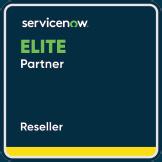















78 78
A CLOSER LOOK AT STEPHANIE POORE ’ S INSPIRING JOURNEY TO MD OF IFS, UK AND IRELAND.

TAPPING INTO DIVERSITY
WITH THE TECHNOLOGICAL REVOLUTION
BY ABIGAIL ALLMAN
PALTO/SHUTTERSTOCK.COM
IN
THE ERP TECHNOLOGY LANDSCAPE, THERE ARE CERTAIN INDIVIDUALS WHO DISTINGUISH THEMSELVES AS PIONEERS, CARVING OUT THE FUTURE TRAJECTORY OF THE INDUSTRY. ONE SUCH STANDOUT IS STEPHANIE POORE, THE RECENTLY APPOINTED MANAGING DIRECTOR OF IFS, UK AND IRELAND.
During a special edition of our previously jointly-hosted podcast, WERP (Women in ERP), Stephanie Poore offers up an insightful glimpse into her own professional journey. As part of the ride, she touches upon the diverse and varied landscape of the tech sector, and the continuous transformation of IFS Cloud - particularly emphasizing the critical importance of integrating AI in today’s enterprise technology use cases.
Tapping into technology talent
Poore’s career trajectory paints a detailed portrait of the adaptability, resilience and tenacity necessary to not only survive but to truly excel in the exciting, dynamic world of ERP technology. From starting out her career with a strong background in economics and initial experience in the burgeoning field of ecommerce, Poore built a rich and diverse portfolio of experiences.
Following graduating from university with a degree in Economics, Poore reminisces: “Initially, I delved into the world of economics, working in the City of London where I engaged in various tasks
“ THERE ’ S A HUGE WEALTH OF TALENT THAT ’ S PRETTY MUCH UNTAPPED OR UNDER-TAPPED. ”

for startups, focusing on supply chain dynamics and e-commerce, collaborating with retailers and wholesalers.”
This led Poore to a phase where she directly collaborated with suppliers for major retailers, traversing to China and undertaking a multitude of unexpected responsibilities. “Reflecting on those moments now, the journey has been diverse, but it has uniquely prepared me for my current position, where I collaborate with thousands of manufacturers,” the MD notes.
As Poore explains, it was through amassing these experiences, over time, that propelled her to a key leadership position within the global enterprise software powerhouse, IFS.
“It’s been something I’ve been working towards for a long time, so the expression ‘blood, sweat and tears’ kind of springs to mind,” she candidly shares. It’s a sentiment that encapsulates the tireless effort, unwavering determination and sheer grit that have been crucial to her ascent, particularly as a woman navigating the predominantly male-dominated tech industry.
Widening the pool
Taking even a quick glance at the figures shows the stark reality; a mere five percent of leadership roles in the tech industry are filled by women, as per reports by PwC. This alarming statistic underscores a deep-rooted, systemic issue that demands immediate attention and targeted, intentional action.
For Poore, it’s clear to see that there is a huge and largely unrecognized potential for diversity when it comes to sparking innovation. The type that, if harnessed, could foster fresh perspectives and drive that much sought-after change in the
80 ERP TODAY | Q1 2024 | GUEST CONTRIBUTOR |
WERP

tech ecosystem. She astutely observes, “There’s a huge wealth of talent that’s pretty much untapped or under-tapped.”
Not to mention that by harnessing this diversity, the industry can effectively address many of the most pressing issues felt today, such as the acute skills shortage and an aging workforce, thereby helping to secure its future sustainability.
Yet, attracting a diverse pool of talent poses a significant set of challenges. One branch of that is, as Poore emphasizes, the critical need for an increased visibility of diverse leaders as a catalyst for meaningful change.
“It’s about increasing the visibility and level of engagement to further connect our community,” she states.
Poore’s argument hits the bullseye - highlighting and celebrating the achievements of such leaders can serve as a powerful motivator, and it serves to reinforce the wealth of untapped potential of inclusivity to drive industry-wide transformation.
The ERP sector, however, faces its own set of unique challenges, such as seamlessly integrating AI, enhancing security measures and addressing the critical skills gap. As visionaries in ERP, we recognize and underscore the urgent need for vendors like IFS to bridge this skills gap.
The pressing need for varied perspectives in leadership is abundantly clear. Poore’s advice to emerging leaders in ERP is to “dream big, don’t devalue yourself in the process.”
The notion echoes the sentiments of many leaders in the tech industry, who recognize the crucial role of mentorship and support in nurturing and developing the next generation of leaders. With numerous challenges on the path to success in

“ SHEER GRIT HAS BEEN CRUCIAL TO HER ASCENT, PARTICULARLY AS A WOMAN NAVIGATING THE PREDOMINANTLY MALEDOMINATED TECH INDUSTRY. ”
ERP technology, the journey may be arduous, but with the right mix of drive, talent, resilience and perseverance, anyone can make a significant and lasting impact.
Technology can help, not hinder diversity
Looking ahead, Poore’s vision for IFS revolves around nurturing a positive, inclusive culture. “I want a team of people that are proud and love working for the company, that want to be there. That will go above and beyond because they love it,” she shares.
It’s a vision that includes breaking down software and functional silos, placing data at people’s fingertips, and creating a culture that encourages innovation and growth. She believes that this approach will add immense value to both IFS and its customers. Plus, with a strong focus on AI integration, Poore affirms that “AI is going to play an absolutely integral role” in shaping the future of ERP technology, bringing about positive changes in gender diversity, inclusivity and representation.
visit us ERP.TODAY 81
ASPECT3D/SHUTTERSTOCK.COM IFS
“ DREAM BIG
DON’T DEVALUE YOURSELF IN THE PROCESS.”

Though many fear the contrary, for Poore, the integration of AI in ERP actually holds immense potential in mitigating biases within hiring, promotion and performance evaluation processes. By analyzing historical data and patterns, AI algorithms can identify and address instances of bias, fostering fairer decision-making practices. AI-powered recruitment tools can significantly contribute to attracting a more diverse pool of candidates by extending the reach of advertisements and utilizing language that resonates with various backgrounds.
But it’s true, AI stands as both a beacon of opportunity and a realm of challenges. As Poore reflects on her journey, she says, “I’ve come to realize that the true essence of AI lies in its ability to connect the dots within vast pools of data. It’s more than mere functionality; it’s the art of harnessing the power embedded in data.”
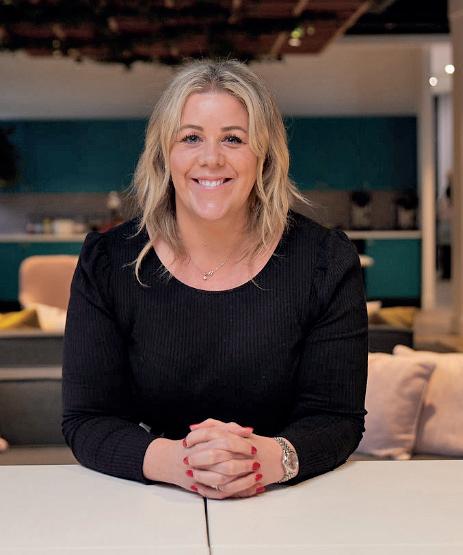
A significant step for Poore here has been obtaining a co-pilot license with Microsoft and, now, embracing tools like ChatGPT has become part of her daily ritual, and an integral part of her professional toolkit.
Understanding that not everyone shares the same enthusiasm for AI, Poore notes thoughtfully that, “Someone once told me that I’m not competing against AI itself, but against someone else effectively utilizing it.”
“ I ’ M NOT COMPETING AGAINST AI ITSELF, BUT AGAINST SOMEONE ELSE EFFECTIVELY UTILIZING IT. ”
This insight fueled her initiative to empower her sales team, unveiling the untapped potential of AI for their advantage. It’s clear that as AI tools, including co-pilot, gain widespread adoption, skepticism will continue to wane. Yet, a significant challenge surfaces in the accessibility of input data to anyone. Mindfulness becomes paramount and, while organizations like IFS employ security measures, the broader landscape lacks universal awareness and policies.
In tackling concerns about inequality, the nuanced behavior of AI, such as, for instance, adapting responses based on perceived laziness on Fridays, sheds light on the need for a comprehensive understanding of AI’s impact. It’s a reminder that AI is not a mere search engine; it intricately pulls and processes information in ways that reflect the complexities of our world.
There is also a significant environmental cost to using AI that organizations and users should be aware of now and looking ahead, with each query to these models apparently demanding the cooling equivalent of a bottle of water. Something businesses conscious of sustainability drivers will need to take into account, Poore notes.
Poore’s inspiring journey underscores the critical importance of gender diversity, inclusivity and representation in the tech sector. As the industry continues to evolve and push boundaries, we must ensure that our efforts are deeply rooted in fostering diversity. After all, it’s the convergence of diverse minds, ideas and perspectives that truly drives innovation and transformation. Let’s strive to create an environment where everyone, regardless of their background, can thrive, make meaningful contributions and help shape the future of technological evolution. Let’s inspire inclusion.
Abigail Allman is the founder of WERP, UN Women UK Delegate, and head of GTM and partnerships at Resulting IT.
82 ERP TODAY | Q1 2024
| GUEST CONTRIBUTOR | WERP
ANJA W/SHUTTERSTOCK.COM

There is only one way to make sure you receive the next issue of ERP TODAY


SUBSCRIBE FOR FREE AT ERP.TODAY/SUBSCRIPTION


www.erp.today


























86 ERP TODAY | Q1 2024
Nurturing the next generation of enterprise talent











AN OPEN DOOR TO STEM





87 SERGEY NIVENS/SHUTTERSTOCK.COM
IMAGINE
A WORLD WHERE THE NEXT GENERATION OF ENTERPRISE COMPUTING MASTERMINDS ARE BORN NOT IN COLLEGE LABS OR CORPORATE BOARDROOMS, BUT WAY BACK IN THE SANDPITS AND TREEHOUSES OF THEIR CHILDHOOD HOMES.
BY RICHARD PEPPER

Early exposure to these fields is like sneaking veggies into a meal - it’s essential for growth, even if it needs to be disguised as something more exciting. Just like convincing a child that broccoli is a mini-tree for their toy dinosaur, making STEM and in particular technology subjects appealing from a young age is key.
FROM LITTLE LEARNERS TO BIG INNOVATORS
Early engagement in STEM isn’t just about creating a workforce; it’s about inspiring the next Tony Stark or Shuri from Black Panther. This is where daydreamers become visionaries and doodlers become designers. The younger generations tend to digest information quickly and move on. The various forms of education need to play catch up, transforming from a snore factory to an emporium where Gene Wilder, in Willy Wonka & the Chocolate Factory, or Robin Williams, in Dead Poets Society, brings life to education at any age.
When done well, introducing kids to technology is like showing them a magic trick. Their eyes light up, amazed at what these tools can do. Having worked in the Oracle ecosystem since 1995, I still see Oracle as the cool uncle, telling them, “One day, you too could be a wizard, but instead of a wand, you’ll use a keyboard or a GenAI front end.”
Excitingly, with the right opportunities in place, enterprise technology giants like Oracle become the gateway to careers that haven’t even been invented yet.
OPENING THE DOOR TO A STEM CAREER
Looking a few years ahead to entering the workforce, it’s become clear that to keep the magic alive, businesses need to use the right technology but, also, they need to create an open door for the next generation to upskill on it.
Speaking to one of our own from Veran Performance, Reuben Massay, explains, “As a Gen-Z, I grew up with digital devices, but as a generation, our ability to use and develop business technology is of serious concern. By next year Gen-Z (people born 1997-2012) will make-up 25 percent of the workforce, so improving the digital literacy and the understanding of the needs of Gen-Z is crucial to the success of all businesses.”
Nobody should be a gatekeeper of knowledge in the STEM space, but in-

stead behave more like tour guides through the land of innovation. When it comes to opening these doors for new entrants, one such community is really starting to bear fruit: Oracle’s intern and Generation Oracle (GenO) career initiatives are giving new entrants the opportunity to shine where they may not have had the pre-requisites or openings to do so.
A career program that invites industry entrants of all backgrounds to immerse themselves in all areas of STEM within Oracle, GenO has over doubled in size since its first cohort two and a half years ago. It has expanded its training scope from its original 200 EMEA members to now seeing 4-500 new starters, cross-pillar, in this year alone, as well as expanding to 40+ EMEA countries.
Meeting with the inspirational Antonine Gibbons who runs the EMEA GenO

“The best thing we can do is to ask them to challenge our status quo and ask the hard questions to make their mark on projects that matter to our customers.”


ANTONINE GIBBONS / ORACLE
88 ERP TODAY | Q1 2024 | GUEST CONTRIBUTOR | NEXT GEN ENTERPRISE

career program, someone who dedicates her time in a rare altruistic way to help others, she gave her take on the next generation of STEM:
“As a new generation enters the workforce during this transformative age, they are redefining what it means to be a leader and they are reshaping the working world - we see it daily within the GenO community. They care more about having a sense of purpose and a positive impact on society and this is all amongst a period of automation where turbulent external forces are at play.”
For Gibbons, there are a few key areas that businesses can support Gen-Z and beyond:
“Teams need to be adaptable and resilient as well as creative. Technical skills are crucial, but we put a lot of focus in the human qualities and transferable skills like communication, adaptability, collaboration. The best thing we can do to support our GenOs is to ask them to challenge our status quo and ask the hard questions to make their mark on projects that matter to our customers.”
Engaging the next generation in STEM is critical; it’s about building a world where learning is not just about filling heads with facts, but igniting imaginations with possibilities. The STEM field currently has a diversity palette similar to that of an old black-and-white movie. Engaging a diverse group of young learners is like adding color to that movie. It’s not just about painting a pretty picture; it’s about enriching the entire scene. By increasing diverse perspectives in STEM, we will foster more innovations, as varied and vibrant as the world itself. That’s also what UKOUG hopes to support with its new partnership with The Prince’s Trust too.
We are living in a world of turbulence and uncertainty in the short to mediumterm. By infusing education with fun, diversity and real-world application, we’re not just preparing these young minds for a future career, we’re setting the stage for them to reimagine and reinvent the world.
Richard Pepper is head of Oracle transformation, Veran Performance and president, UK Oracle User Group.
GENERATION ORACLE KEEPS ON GROWING







STEPHANIE IJEOMAH
3rd cohort - GenO cloud platform rep (Ireland based)
Oracle has participated in driving diversity especially with the creation of the GenO program. As a GenO alumni, Oracle opened the doors to opportunities for people of different backgrounds in terms of knowledge, culture and exposure. This has not only created a foundation for people that never saw themselves in tech, but also in turn drove success to Oracle’s global growth.”
IZZY OSBORNE
4th cohort - GenO apps consultant (UK based)
“The GenO program provides a great entry into tech for people from all backgrounds and enriches the perspectives within the industry as a result. It’s exciting to see how this potential will be harvested as Generation Oracle grows.”
MARIANA
DA COSTA DUARTE
3rd cohort - GenO HCM consultant (UK based)
“The program attracts new talent from all walks of life across EMEA, introducing us to different ways of thinking, working and problem solving. Being a part of the GenO program has provided me the opportunity to learn new skills that are invaluable and which I will be able take on with me throughout my career at Oracle. The program promotes innovation and creativity and that in itself is priceless. I believe the results speak for themselves with regards to the benefits of having a diverse program like the GenO Program.”
TOSIA CISZEK
4th cohort - GenO consultant (UK based)
“Being able to collaborate and network with individuals all across EMEA, who are also at the start of their Oracle journey, has exposed me to an incredible range of diverse talent. The GenO program encourages us to not only learn from each other but also share experiences, so that we continuously develop ourselves to be more inclusive.”






















































































The times are a-changing, and CloudRock probably know this better than most of the consultancies out there.
Formed in 2016 by Minos Ataliotis, the HR and finance consultancy was arguably born amidst interesting times on both sides of the pond, from elections to referendums, to growing the business amid pandemics and protests. Those social narratives remain, but away from political and economical transformation, it’s hard not to notice the change on a dayto-day level in the workplace - look at human resources for the enterprise alone, which is currently seeing a skills shortage worldwide. Companies also have more of an onus nowadays to improve the employee experience, following the rise of hybrid work post-COVID.
Despite facing such turbulent events in its relative infancy, our interview with Ataliotis reveals that CloudRock has not been held back in becoming the “only and largest” global and independent advisory in the HR/finance transformation space.
The CEO is proud of how far his baby has come, and confident in its future. But hearing from Ataliotis, you can’t help thinking this success in one part is driven from the CEO’s own beginnings: Ataliotis hails from a seasoned HCM consulting background for the likes of PwC and IBM, before he decided to cut loose and set up his own advisory seven years ago.
“I’m a delivery person,” Ataliotis explains to ERP Today in CloudRock’s London HQ. “I started as a fresh-faced graduate on PwC’s graduate program [...] and ended up in HR finance, digital transformation, heavily in the Oracle world working for large corporates, blue chip, financial services organizations, working on large-scale transformation.
“I don’t think there’s a role I haven’t done - anything from technical roles, function roles, to data, testing, project management, change management. It all gave me a really good grounding.”

UDY WITH A CHANCE OF CURVEBALLS
92 ERP TODAY | Q1 2024
TALKING HCM TODAY WITH CLOUDROCK CEO MINOS ATALIOTIS
BY GIACOMO LEE / PHOTOS BY JOEL CHANT

“THERE
ARE ALWAYS CURVEBALLS AND THINGS ALWAYS CHANGE.”
visit us ERP.TODAY 93
From this experience, Ataliotis knew what he wanted to do with his own consultancy, and for him, CloudRock is a nice blend that suits his various strengths, and a cloud “reincarnation” of legacy ERP consultancies.
He also remembers a level of “immaturity” in the market when founding the firm, noting CloudRock had to justify its position in the landscape: “On-premise technology was on the decline and there were more and more inquiries from our customers about helping them move to the cloud, technology strategy, running business cases and technology selections.
“We saw a huge demand in that, with around five projects signed in the space of a month, and it all took off from there.”
In the consultancy space, Ataliotis shares that, in his experience, there are always curveballs and things always change. This outlook has resulted in CloudRock becoming adept at providing solutions to customers no matter the weather, solutions including Workday, Oracle, SAP, ServiceNow and Dayforce.
“IT’S A MISSED OPPORTUNITY IF YOU DON’T TRY AND STANDARDIZE AS MUCH AS POSSIBLE ON THAT CLOUD TECH.”
HCM Today
Seated comfortably in the CloudRock London offices, the space seems a testament to Ataliotis’ and the company’s relaxed working culture, with a record player in one corner and decadent donuts up for grabs. Ataliotis himself is a personable interviewee, and although he clearly knows what he’s talking about, there’s no pretension or grandstanding in his answers. If anything, it’s disarming “human capital management” in action.
Getting down to the crux of the matter, ERP Today asks what HCM means now for the enterprise, alongside finance transformation. What Ataliotis sees is today’s volatility driving organizations to faster access to real-time data, which requires consolidated platforms and less integration between various sources.
Interestingly though, while current financial activity has led to less mergers and acquisitions activity in general, a large amount of CloudRock’s revenue comes from M&A.
“Customers are acquiring, they’re moving into other markets, they’re divesting,” he explains. “They have a lot of ambition in terms of inorganic growth, but you can’t do that if you’re [...] working with two-
tier or three-tier vendors as a large-scale global organization.”
As such, CloudRock is steeped in the tier-one brigade. Running through them with Ataliotis gives a nice summary of what transformation-hungry customers see in the top vendors. ServiceNow’s product, for one, has the power to transform workflow and drive operational efficiency and Ataliotis elaborates, “I don’t think the market has truly woken up to what it has there.”
Elsewhere, the founder also thinks the SAP end of ECC deadline will become another wake-up call for customers this year, and points to the market appeal of having both finance and workforce management in the one cloud of S/4HANA. Meanwhile, Workday and Oracle both offer a double-headed platform play for HR and finance which appeals to highgrowth startups where “everything needs looking at.”
That’s not to forget Dayforce, as Ataliotis also reminds ERP Today of the strong HCM contender for retail manufacturing and hospitality, offering “very powerful solutions for large scale organizations.”
The common thread in the market today is a resolve to improve upon the employee experience. Here, Ataliotis believes technology plays a big part in helping people feel valued and engaged with their careers, something not so easy when workers operate in silos.
“If you can expose more in terms of opportunities within that organization, then people have a voice. Even ourselves internally, we have an anonymous whistleblower functionality within our HCM system, so if anyone has a concern they can raise it anonymously; it could be discussed directly with HR. That never existed 20, 25 years ago, but now it’s pretty common and standard as something you need to offer your teams so they can feel engaged and supported.”
On the financial side, the CEO notes compliance is hotter than ever, citing one large-scale financial organization on CloudRock’s books. Operating in around 50 countries, the regulatory element of working in multiple jurisdictions for the client makes for a knotty challenge.
“Take the example of Brazil and e-invoicing,” he explains. “There might only be 12 employees in the entity, but we still need e-invoicing fully integrated with local authorities there. That’s a lot of hard work, so I think having the ability to say to our customers ‘simplify’ where the complexity sits and makes you special - that’s the area you really need to focus on.”
Changing with CloudRock
The case for customers today is simplifying and looking at what can come “out of the box”, as it were,
94 ERP TODAY | Q1 2024
| INTERVIEW | MINOS ATALIOTIS
for their enterprise, Ataliotis says. Here, CloudRock can help them keep an open mind and see how new solutions may work better than what they currently have, and explore how exactly they want to change as an operation.
“The change management piece is going to be massive, even if you just lift and shift your processes. So why not deal with it as a common change, moving to a new system and new processes, with more self-service, becoming more mobile?
“It’s a missed opportunity if you don’t try and standardize as much as possible on that cloud tech.”
Where CloudRock fits into the Business-as-Usual (BAU) support model is filling in the gaps when it comes to change, should a company not want a program manager on its books for a number of years, or an army of testers and integration folk at hand.
“You may not need the functional expertise in the technology that you are implementing,” Ataliotis explains. “These are all things that fall onto the customer regardless of which cloud tech that you go with for change management.
“If you’re going with a Big Four, tier one consultancy, they’ll do it, but if it’s a boutique, they generally wouldn’t. But we do a lot in that change management space.”
CloudRock is described by Ataliotis as a one-stop shop that takes away the headaches of hiring en masse for a transformation project.
“We feel we represent the customer to the SI [...] Our people understand the methodology and the product.”
People person
CloudRock’s services are popular so far with media, retail, hospitality, sports management and financial services. These customers are served not just in London but on a global basis, with the firm having footprints in the US, India, Portugal and Australia. As its worldwide headcount tips 200 employees, CloudRock can claim to be the largest - and onlyglobal and independent advisory in HR and finance transformation.
Ataliotis is especially proud of the Indian expansion, and talks with pride of CloudRock’s graduates from its Cultivate Academy in Mumbai, saying it’s the most “rewarding part of this whole job, giving those early career opportunities in their growth, seeing their development.”
These students get to be trained on a variety of platforms through a mix of technical data integrations, security skills and also testing skills. That diversity harks back to the CEO’s early days at PwC, recruited from a graduate fair and strapping himself in for the ride.
“I didn’t really know what I wanted to do, but ended up doing lots of different things,” he remembers.
Ataliotis grew up in North London and credits his comprehensive-based education for giving him street smarts. His father came to the UK from Cyprus, which meant a childhood growing up in expat Cypriot culture. ERP Today cheekily asks if that means he can relate to the recently popular sitcom Stath Lets Flats, which revolves around the British Cypriot community of North London.
Ataliotis laughs, saying he recognizes a lot in the show. But while the titular Stath may be a hilariously hapless sort when it comes to social skills, it’s clear Ataliotis suffers no such problems. He’s a real people person and understanding people is a good skill to have in the HCM game, helping to be a “rock” when clouds make for a stormier kind of weather indeed.
“IF YOU CAN EXPOSE MORE IN TERMS OF OPPORTUNITIES WITHIN THAT ORGANIZATION, THEN PEOPLE HAVE A VOICE.”

visit us ERP.TODAY 95
THE GREAT EMPLOYEE


Why HR should treat
ERP TODAY | Q1 2024 96
GL W
UP SAY HELLO TO YOUR FAVORITE CUSTOMERS
employees as a business’ most important customer win.
BY DEBRA LILLEY
Is the employee experience the same as the customer experience and, if so, should HR approach their employees as customers? Such was the question I asked in a webcast series on lightbulb moments in the HCM discipline, run by Leatham Green, transformation director at Oracle. A contribution arguably intended to “turn up the flame” rather than be a real outright lightbulb moment for HCM, it nevertheless remains an important topic to fuel most conversations about reimagining the workforce today.
So why is employee experience important?
Many years ago, when embarking on the people module for the Chartered Director program with the Institute of Directors, I remember arguing with the concept that HR was there to protect the employer.
In my role as a systems implementer, I think we have moved on from those days now, with employee experience being key in all HCM projects today and often part of an organization’s goals.
The change emerged steadily, and it first became key in the candidate process; organizations wanted software that could help them improve in that area. But, speaking with two companies at a software conference recently, their reasons were far beyond just the candidate experience - they also saw the bounce-back value to their organizations.
The first was a major European bank that needed the experience to be “beyond good.” They explained that even if a candidate was unsuccessful, they needed to feel the bank cared - after all, they could be an existing or future customer.
The other organization was a mining company, an industry that needs to work hard to sell what they do and communicate their impact at an even earlier stage if they are to get candidates at all.
They went further than most organizations, whose main driver for a positive candidate experience was to attract young people. It actually expanded on that, seeking to give an employee experience that also retained their people. Plus, with the desire to work with modern, intuitive systems rank-
visit us ERP.TODAY 97
ROMAN SAMBORSKYI/SHUTTERSTOCK.COM
ing highly, avoiding the technology needed to help here could even result in candidates simply seeing the employer as out of touch.
Just as the concept of employee experience was growing as an objective, the COVID pandemic rocket-fueled its growth right into inner boardroom conversations, with strong evidence to suggest that if you improve employee experience you will improve customer experience.
What’s in an experience?
To compare the employee to the customer, we need to explore the customer experience.
Let us start with a personal example of a great customer experience. Earlier this year, I had an accident and needed the NHS. Now, in the news, we hear all about the KPIs for the NHS, but they are about what the NHS does. They are not about how the patient feels.
I remember thinking and reassuring myself as I waited for them to arrive: “Yes, there will be lots of delays. But they are the best people.” And my thoughts proved true. When the ambulance arrived, the paramedics gave the best customer service. They gave empathy, quickly gave the trust I needed and were honest and open about my injuries.
than likely been adopted by those companies to ease the process (not that I am offering to repeat the exercise).
When you ask people about what gave them a bad experience - communication is always high on the list. Sometimes good customer service is explaining others’ pain points, so people don’t feel injustice. A great example is the dandelion lanyards campaign which helped us to understand not all disabilities are visible.

It drew parallels with a TED Talk by Diana Dosik entitled “Why we need to treat our employees as thoughtfully as our customers”, which we’ll come back to later, but one thing she talked about was eliminating the pain points in the customer journey.
In my ambulance experience, they eliminated the pain points, no pun intended, but the drugs were well appreciated. The next most important pain point they eliminated was not knowing the seriousness of the accident.
That is what makes great customer service. Not the big things. Not the contract, but the things that make you feel valued and help you understand the situation.
Communicating the good and bad
Often when we discuss customer experience, we look at examples of when it is bad.
Several years ago, before as much was as online as today, I stupidly left my laptop bag on a train. Replacing the technology was quite straightforward but I lost my expenses envelope and needed to recreate an entire month’s expenses. It was such a mammoth undertaking that I wrote a blog about which companies gave me the best service and ranked them.
This was cathartic for me, but it also identified the pain points I had in the process and if it happened again today, the innovations offered by current technology will have more
There’s a saying that goes “good communication has a positive impact even when the news is bad, and poor communication can have a negative impact even when the news is good” and it fits in nicely here.
An example of this was a recent holiday flight - everyone boarded early, all excited to be off, when the pilot announced a hold-up as two passengers were not yet on the plane and would take some time to arrive. We needed to wait. That on its own would not have been enough to make the passengers feel better, although an improvement on no communication. But he went on to explain they had been given the wrong information at check-in and now were being escorted through the airport by airline staff.
He asked that we not give them a hard time when they eventually arrived as they were stressed enough already. That minute of communicating with the passengers meant we had empathy with them when they arrived and collectively reduced their stress.
“I REMEMBER ARGUING WITH THE CONCEPT THAT HR WAS THERE TO PROTECT THE EMPLOYER. NOW, EMPLOYEE EXPERIENCE IS KEY IN ALL HCM PROJECTS.
Making the customeremployee connection
So how does customer experience relate to employee experience?
Back to Diana Dosik’s TED Talk, Dosik pitched that “today’s companies know everything there is to know about their customers and will stop at nothing to ensure that their experience is pleasant and meaningful. But what if they directed some of that same energy at understanding and engaging their employees? What are the potential payoffs for a better motivated, more loyal and imaginatively innovating workforce?”
One main area she explored was that customer experience is segmented, not all customers have the same pain points, and yet in employee experiences, we are more singlethreaded. Employee journeys are not all the same but we as employers can do much to improve the experience. We can also “nudge” our employees to follow our policy and meet
98 ERP TODAY | Q1 2024 | GUEST CONTRIBUTOR | EMPLOYEE EXPERIENCE
JOEL CHANT
“WHAT IF THEY DIRECTED SOME OF THAT SAME ENERGY AT UNDERSTANDING AND ENGAGING THEIR EMPLOYEES? WHAT ARE THE POTENTIAL PAYOFFS FOR A BETTER MOTIVATED, MORE LOYAL AND IMAGINATIVELY INNOVATING WORKFORCE?

our organizational goals. I use the word “nudge” because Dosik used it, as does my colleague Vicky Collier who utilizes behavioral economics in our change management.
Listening to the pain points
The place to start is to ask and then listen to your employees. A public sector organization once told me that they needed to improve employee adoption of their system, a few years after it had been implemented. I wanted to start by asking their employees about the pain points and, whilst they believed they knew the answer, they did allow a survey of the workforce.
It discovered that the employees felt there was a lack of training, not so much when they went live but afterward. If they didn’t use a process for a while and couldn’t remember, or someone new joined, each poor interaction just grew the problem.
The IT department were mystified, as they had great training available online. Then, when showing some of the participants of the survey the training, they were surprised; they didn’t know it existed let alone where to find it. It was a communication problem.
Innovations in the systems we use have all sorts of technology that can help and are designed to improve employee experience, but they can also help you identify some of the pain points. Live chat helpdesks and AI-fueled chatbots give us insight into what is being asked, especially when people give up trying to figure out the answer themselves, or from managers and colleagues.
Whatever you do to help your employees have the experience you think they want, make sure you have a simple
path for when it isn’t a positive one. We tend to build for the “happy path” and when that isn’t the problem, automation may put HR even further away from the employee at a time when they need them most.
Discussing this at length with Oracle’s Green after the webcast, he offered this thought: “Employees want to know that their voices are heard and there is a purpose to what they do, and they will be treated as an individual with unique traits and aspirations - just as we all do in our lives.”
And the value to organizations that get this right? Green summed this up by saying: “If you have a great employee experience, hiring becomes easier, productivity increases and there is more collaboration and creativity. Also, a great employee experience is positively correlated to business success - organizations who can do this well will have higher levels of employee engagement, better company culture and productivity.
“It also improves the lives and well-being of your colleagues alongside your organization’s reputation. Organizations that succeed in recruiting and retaining top talent are those that help their employees explore their interests and passions, build their skills and grow their careers.”
It’s a win-win game, your employees should be your favorite customers, your inner circle of individuals that directly impact your business success, reputation and future, not to mention the experience of your actual end customers too.
So, surely by employing tactics like these to keep that lightbulb aglow - the notion of employee buy-in has never looked so bright.
Debra Lilley is vice president customer success, Inoapps.
visit us ERP.TODAY 99
BILLION PHOTOS/SHUTTERSTOCK.COM









WHAT’S ON THIS QUARTER?
Discover your enterprise technology agenda





erp.today/events
USERWINS
LIVE NATION
Sing it loud and proud!
How SplashBI became the support act for Live Nation’s financial reporting
BY CHARLES WHITMORE
Global live-music events promoter and venue operator, Live Nation, handles a gargantuan amount of data spread across various segments, like concerts, ticketing, artist services and sponsorship, across 41 countries. As its business continued to grow, Live Nation found that it required a technological upgrade to operate properly with this much data weight.
Getting a lot of financial data in tune
Since 2011, Live Nation has been an Oracle EBS customer, moving from release 11 to 12.1.3 over time. With Live Nation’s expansion, the complexity and volume of data they handled also surged. Its current reporting platform, Oracle Discoverer, though reliable, was no longer capable of meeting the evolving requirements. The finance team, who were adept with Excel and heavily reliant on it, craved a more flexible, user-friendly solution that could meet their extensive needs.
Making a SplashBI solution
Live Nation found a partner in SplashBI, who came onboard to help streamline its reporting processes, trim down finance reporting timelines and otherwise support the expanding business.
The following implementation was a journey marked with challenges and triumphs. The reporting and analytics solutions provider found Live Nation’s existing ERP platform to be robust and flexible and was then easily able to step in and fill the gaps left by the available reporting tools.
A high number of users accessing the database all at once posed hurdles related to concurrency, with multiple applications also running at the same time.

“Transitioning from Discoverer to SplashBI was like swapping a onewheel bicycle for a Ferrari”
Thankfully, the SplashBI software was adept at managing the data complications.
Adopting a multi-node architecture, Live Nation was able to enhance performance and effectively deal with the concerns around high availability necessities.
For the Live Nation employees, what really rings true is the user-friendly nature of SplashBI’s interface, the flexibility of scheduling reports and the capability to run reports within Excel.
Hari Tatrakal, director of data at Live Nation during the project, was particularly receptive to the new tech adoption, saying: “Transitioning from Discoverer to SplashBI was like swapping a one-wheel bicycle for a Ferrari. We got a lot of support from SplashBI, they were very helpful in getting all the answers… [and were] instrumental in achieving success.”
Audit readiness, cost savings and enhanced performance
Resulting in almost immediate change, the implementation has seen Live Nation experience notable improvements in its financial reporting process with SplashBI’s features. The live-music promotor has witnessed multiple benefits including improved compliance, audit readiness, cost savings and enhanced performance.
Following the success of this integration, the partnership has committed to further engagements and is preparing to explore the Oracle Cloud reporting landscape with SplashBI. Analyzing its business requirements moving forward, Live Nation has opted to leverage SplashOC, SplashBI’s cloud solution, for its future operational reports.
Jateen Patel, director of fintech at Live Nation, shares one last sentiment: “Our business took to SplashBI tremendously… they just loved the UI, they loved the flexibility of scheduling reports, the ease of using the reports, the ability to run reports from within Excel.”
With both entities happy with the results of the partnership, it certainly reports success to sing and shout about.
visit us ERP.TODAY 101
MELINDA NAGY/SHUTTERSTOCK.COM

GALLIFORD TRY Building
up to the HCM cloud
Galliford Try shifts from EBS to the Cloud HCM and payroll with Oracle and eAppSys
BY STEPHANIE BALL
As Oracle users gathered to network at the UKOUG conference, ERP Today met with construction goliath Galliford Try to hear about its ERP, HCM, payroll and finance upgrade with Oracle - shifting from an EBS instance to the cloud.
Part of the FTSE 250, Galliford Try is a UK housebuilding, regeneration and construction group, pushing revenues of £2.7bn.
Upgrading a legacy partnership
Beginning the two-phase program, Dilpesh Patel, Oracle Cloud HCM and payroll program manager at Galliford Try, shares that sticking with Oracle was a “no brainer”, with Oracle APEX, EBS and sales cloud already in place from a decade-long partnership.
The HR and payroll upgrade started originally in 2021, and was ideally meant to complete in twelve months, before kicking off a more complex, full-core ERP shift.
However, this had to reset 17 months in,
and the projects were delayed and converged due to SI switch-ups and internal acquisitions amongst other challenges.
In HR there were several complexities, such as different pension schemes, inconsistent employment terms and benefits, acquisitions and multiple payrolls. Even the method for calculating annual leave allowances also varied across systems - jumping from hours in the cloud to days in Oracle EBS.
As a result, the large volume of historical data also needed cleansing and completing from multiple sources including EBS, Taleo Learn and Recruit, as well as supplementary offline spreadsheets. Integrations with third parties additionally had to be considered, including BACS, HMRC, Fleet Management and Active Directory.
Combining the right resources
Galliford selected Inoapps as its implementation partner for ERP, due to its construction industry-specific product. While, for upgrading HCM and payroll,
“We’ve taken a huge leap forward in moving to the cloud”
the implementation was shared between Oracle Consulting and eAppSys, as its data migration partner.
The project went live in September 2023, with Patel admitting the initial, “12 months was probably quite ambitious when you see what we had to do, with the finance side too.”
Now, going from recruitment through to onboarding in one system, the Galliford Try team says the experience is much better.
On the HCM and payroll upgrade, Patel says, “It’s been successful. Has cloud been adopted? Yes. We’ve had a lot of benefit, a lot of positive noise from our HR, from the business, through engaging in self-service. We’ve moved from manual timecard entry to self-service.”
A data management win
One key win with eAppSys and Oracle Consulting was the application of the Data Management One tool for mass data cleansing and transformation.
Sean Doherty, Galliford Try’s HR process lead, worked on data migration during the project and explains: “For our Oracle Time and Labour, Oracle doesn’t have a mass upload facility that we needed to go live where we used spreadsheets. eAppSys developed that as part of their toolset and built it quite quickly - they saved the day for us. A brilliant partner to work with, they listened a lot and supported us.”
Migrating into multiple environments simultaneously, validating data and developing a configurated version control, Galliford has seen an over 97 percent success rate in data loads. The business can run multiple iterations to identify data issues and, for its payroll hours cutover, has brought two-week early iterations down to two days.
Next, Galliford will be utilizing that cloud data to gain business insights through analytics and reporting.
On the project as a whole, Doherty notes, “The whole user interface is much more modern, people can see that we’ve taken a huge leap forward in moving to the cloud.”
102 ERP TODAY | Q1 2024
USERWINS
ASTRAZENECA
A clean bill of compliance
AstraZeneca boosts financial controls compliance with Celonis
BY YOANA CHOLTEEVA
Working in a highly regulated environment, with the need to prove that every financial transaction system action is correct, biopharmaceutical company AstraZeneca was looking to reimagine its financial controls compliance and drive better performance. To make this possible, the firm sought enterprise technology assistance.
For Raaj Joshi, director of controls and compliance transformation at AstraZeneca, the crux of the company’s challenge was found when the AstraZeneca team had started process mining across very disparate processes, with an incredibly complex picture emerging.

“People were like ‘oh my God, information overload, no idea what to do right now’,” Joshi explains.
Freshly entering the organization from a consulting role, Joshi believed he had some ideas that could set a new direction for compliance monitoring and operating, across clients and controls, while positively disrupting the status quo. Following this vein, AstraZeneca decided to expand its existing collaboration with data processing SaaS provider Celonis.
Joining all elements
AstraZeneca moved to use the full extent of the Celonis platform on its “controls”the part of the firm’s processes designed to accomplish a goal - to reduce days of preparation for its team, ongoing.
To operate the controls and protect the organization from financial misstatement and fraud, a program was designed and implemented to allow three lines of defense - management, internal controls and
“We’ve totally revolutionized it. We’ve stripped that down entirely. There are no more ten days of prep, there’s no prep whatsoever”
auditors - to operate in the same system.
Joshi explains the long-winded controls process before the upgrade: “One control that we run, it is a beast, it takes ten days to prep and then another three or four days to operate, and it operates at the last minute, so people are kind of rushing.”
Now, with Celonis, the process has completely transformed for the better, Joshi says: “We’ve totally revolutionized it. We’ve stripped that down entirely. There are no more ten days of prepthere’s no prep whatsoever.”
On budget implementation
Overall, this project has taken approximately ten months from start to finish and was ready to go live in January this year, delivered on budget.
The only hold-ups came from firstly the work on financial controls, which required data of a higher level of accuracy and completeness. Secondly, the company needed to bring its auditors on that journey and get them comfortable with the new technology, while avoiding a clash with the accounting year-end for its launch.
Augmenting employee efforts
The solution is now augmenting employees’ work, helping to redirect their efforts to more important tasks, but its key role in compliance makes the biggest difference, helping the company keep its license to operate.
Looking at AstraZeneca’s transactional data, rules and algorithms, Celonis software helps to pick out the exact points the team needs to start looking at. Plus, instead of waiting for five-six weeks before accessing its data, the team can view it in real-time, handing back employee time while also improving records.
“The ability to do it in real-time and meet our obligations is critical for us because if we don’t, we get something called significant deficiencies or material weaknesses which have a massive impact on our share price, so doing that in this kind of environment is extremely game-changing,” Joshi says.
For the pharma firm, the benefits from this partnership will continue to trickle down, with ongoing qualitative results across its financial controls. Thanks to the new controls tools, AstraZeneca expects to see massive quantitative savings too, across expenses, time and redirected team efforts.
visit us ERP.TODAY 103
SIGNING OFF
MANAGING CHANGE: THE SCIENCE OF HAPPY ENDINGS
BY YVONNE DE VILLE
How can organizations adapt to new disruptive technologies? “The only constant in life is change”, Heraclitus, the Greek philosopher, observed, and my experience has taught me that the most predictable thing about change is its unpredictability.
A study by cloud-based accounting provider FreeAgent found that 71 percent surveyed in the UK admitted to struggling with changes in their life circumstances. Over a quarter felt “physical panic” or “fear” when asked to break from their usual routines, with 15 percent refusing to adopt more efficient working policies or new office systems through fear of change.
Today, it is perhaps even more difficult to anticipate what the world will be like in 20 or 30 years. The impact of technological change is unprecedented and with the need to upskill and deal with change, preserving our mental balance is going to be crucial in our day-to-day lives.
Determining a change playbook

The most predictable thing about change is its unpredictability.
The heavyweight champion boxer Mike Tyson once said, “Everybody has a plan until they get punched in the face” and, for me, this is the nature of change. Think back to the last time you were part of a major change of vision, direction or process. It is all about managing people, implementing processes and learning the techniques that make change easier to execute but, ultimately, it comes down to your determination to improve things.
Change is either forced upon an organization in reaction to external influences or through proactive moves to make the most of an opportunity yet to be identified. You need to sell the opportunity to your team; people are afraid and it is necessary to inspire courage before embarking on any quest to change the status quo. If your people are restricted by personal feelings, vendettas, loyalties or stubbornness against a new idea, they will cause change projects to stumble or even fail.
Most aspects of any well-run change management project within an organization are delivered in small, incremental
steps. That way, it’s easier to sell the idea and manage your people’s emotions along the way.
Often, it also comes down to timing. Data analysts now study algorithms, trends and patterns to predict the likelihood of events and consumer behaviors. The fact is, change is inevitable, but positive progress as a result of change is not. Taking hold of the rewards of change requires constant attention as it rarely follows straight lines or linear progression. The nimbler you can become, the more likely you are to traverse the many highs, lows and pitfalls on your way.
Technology can even help with change
As organizations adapt to new disruptive technologies in 2024, leaders should encourage a culture of continuous learning and experimentation to foster innovation, with employees staying updated on the latest technological advancements and given the resources and training to adapt.
Investing in technologies such as blockchain, IoT, CRM, chatbots and other AI-driven tools can streamline operations, enhance customer experiences and improve overall efficiency. Implementing cloud-based solutions and adopting data analytics can also provide valuable insights for better decision-making and aid in understanding evolving consumer trends and preferences. Cybersecurity measures can protect sensitive data and alleviate security fears.
Investing in inclusive, collaborative tools to facilitate seamless communication and productivity, regardless of employee location, helps the flexible work preferences of the new generation.
By implementing these strategies, organizations can effectively adapt to new disruptive technologies in 2024 and beyond.
Yvonne de Ville is chair of the IoD Finance and FinTech Group and author of Managing Change: The Science of Happy Endings.
104 ERP TODAY | Q1 2024

About to embark on a HR or Finance technology enabled transformation?
We help build accelerated business cases, run technology selections and structure your programmes for success with our established CloudRock IQTM methodology framework.
Get in touch to find out why some of the Worlds leading brands have trusted CloudRock in a long term partnership on their cloud journey.
Intelligently more...
+ Partnership
+ Ambition.
+ Clarity
We make complex transformation humanly possible.
cloudrock.com
LONDON | LISBON | MUMBAI | SYDNEY | NEW YORK












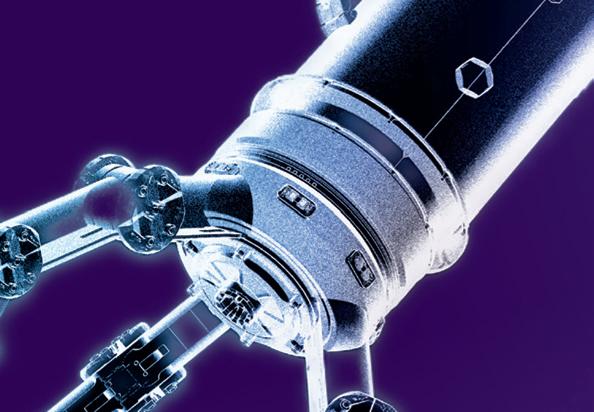





























































































 BY STEPHANIE BALL AND YOANA CHOLTEEVA
BY STEPHANIE BALL AND YOANA CHOLTEEVA





























































































































 Paul O’Sullivan, senior vice president of engineering, Salesforce UKI:
Paul O’Sullivan, senior vice president of engineering, Salesforce UKI:













 BY HOLGER MUELLER
BY HOLGER MUELLER















































































































































































































